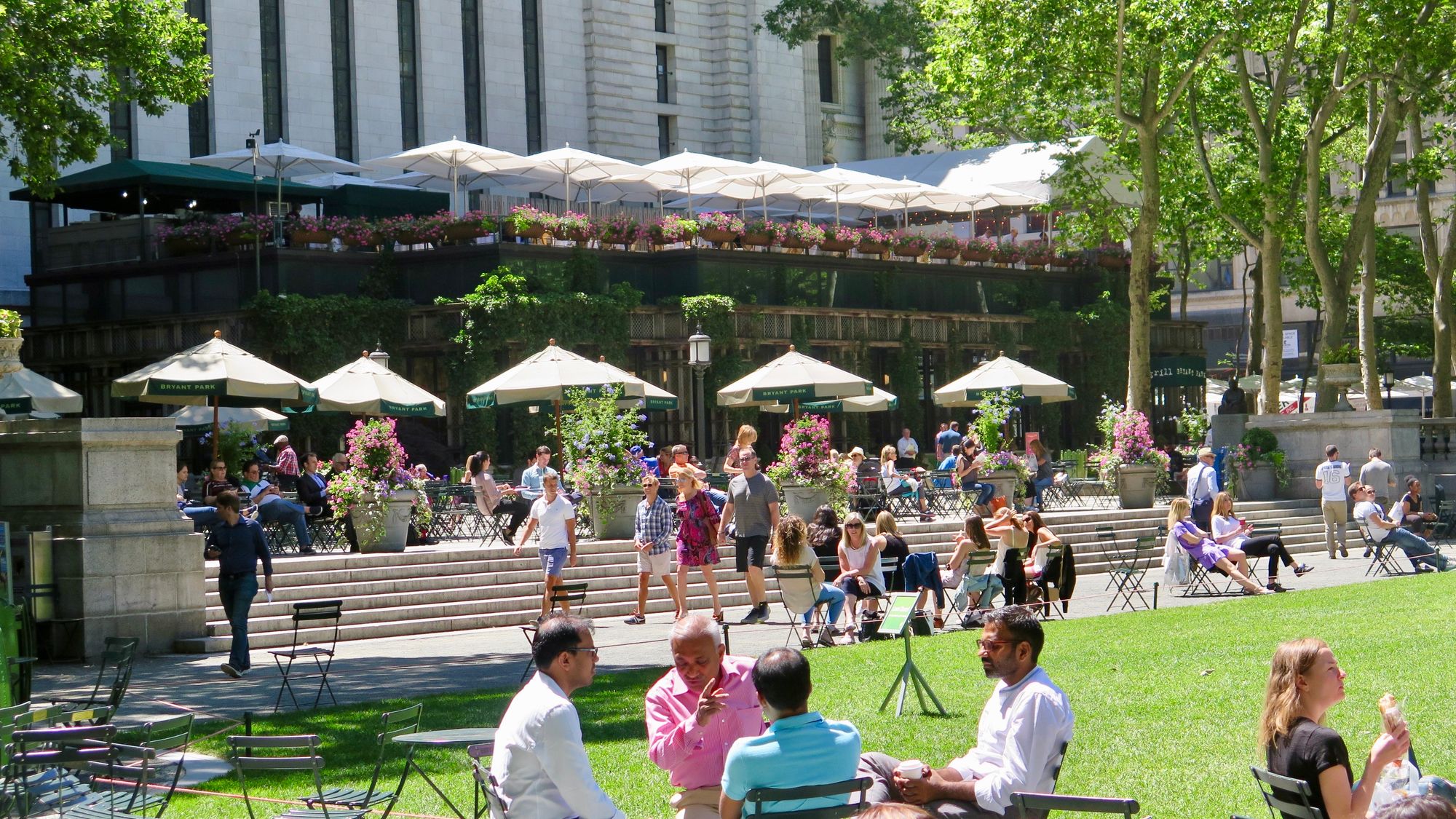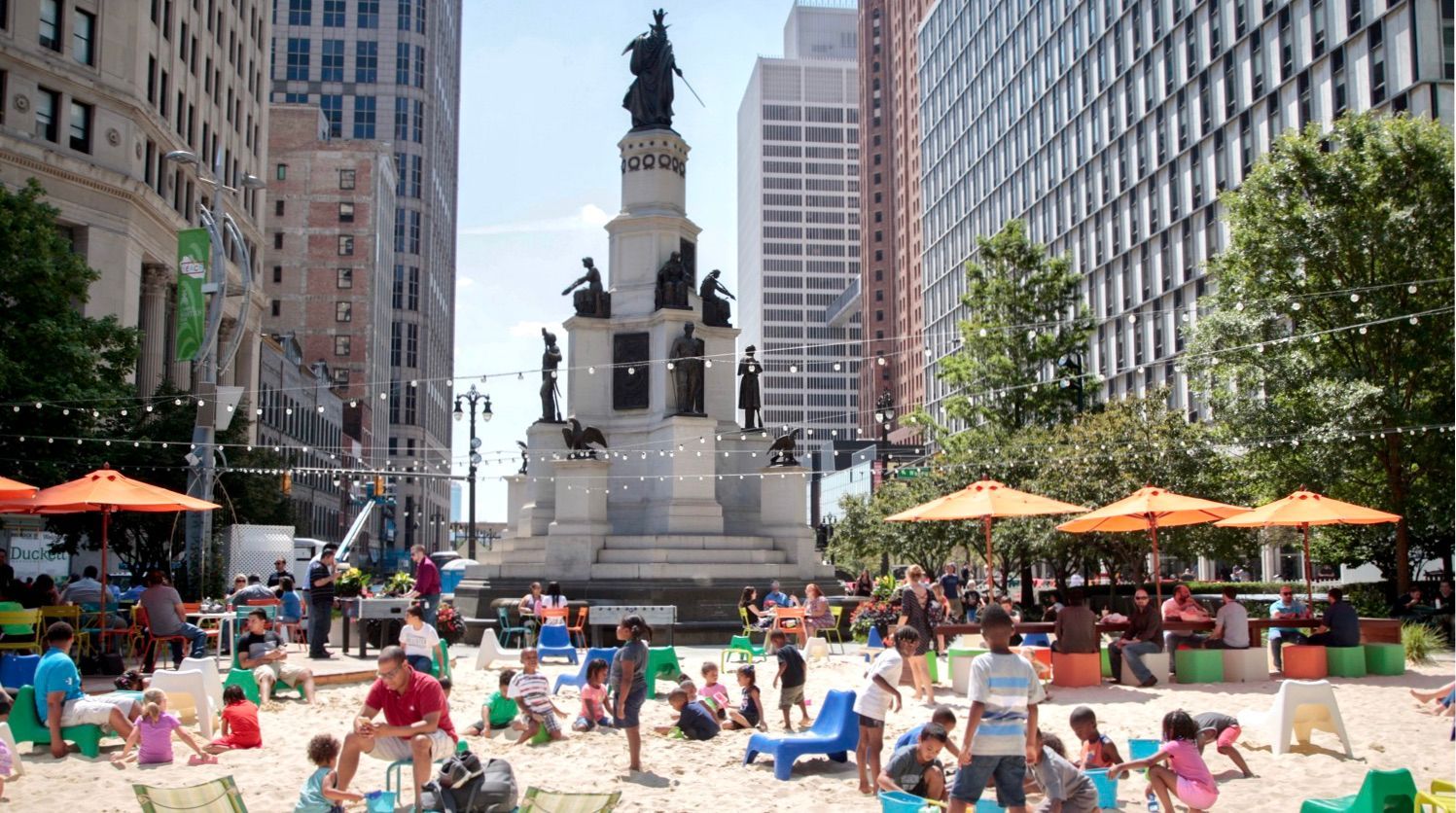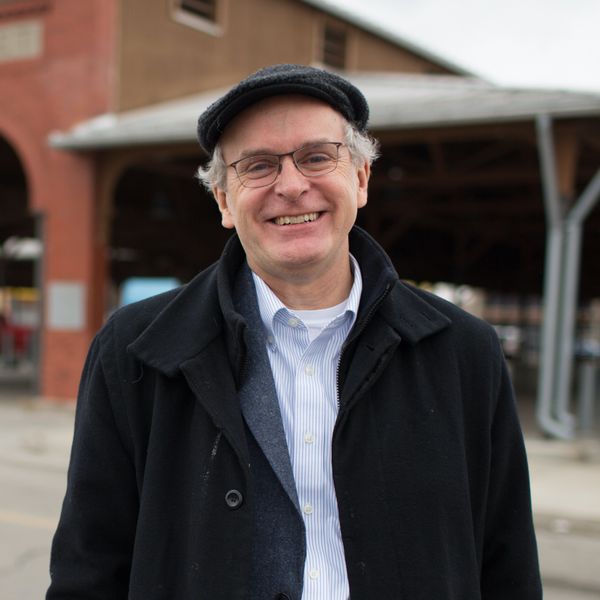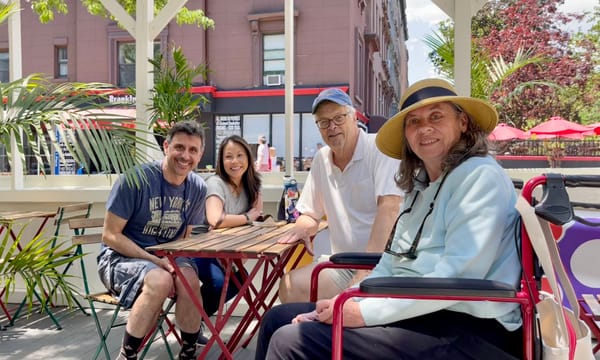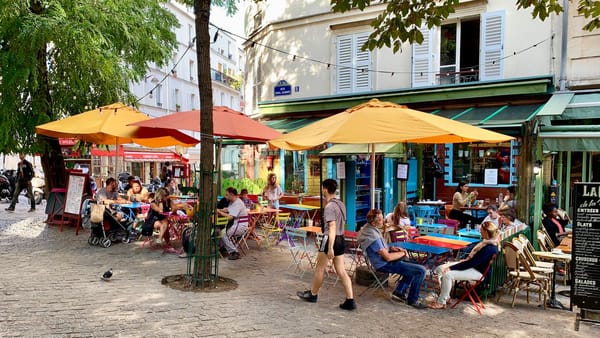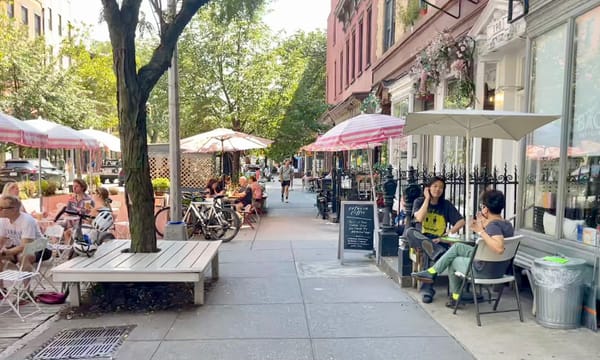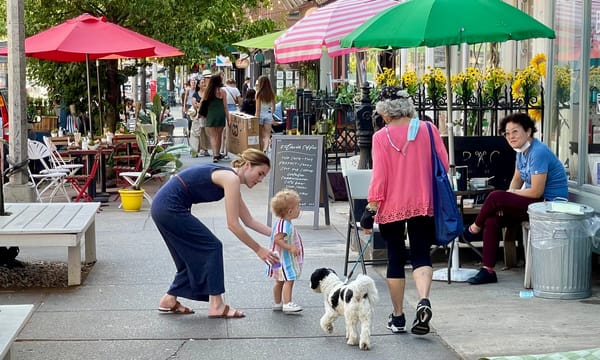Two historic buildings, one in Cobble Hill, Brooklyn, and the other on Place Maubert in Paris, each create a multi-layered destination on "double-loaded sidewalks." Here's what we can learn from them.
Court Street, Brooklyn
Court Street is the Main Street of two neighborhoods in Brooklyn: Cobble Hill and Carroll Gardens. To start, we are excited to have seen some wonderful changes to street life all along Court Street as new hubs of activity have emerged in recent months. What has been happening because of Covid-19, and the resulting pattern of public space-based improvisation is both remarkable and prophetic. It is a great example of how streets can change to become more local and communities can achieve their full potential. This trajectory could fundamentally remake the corridor.
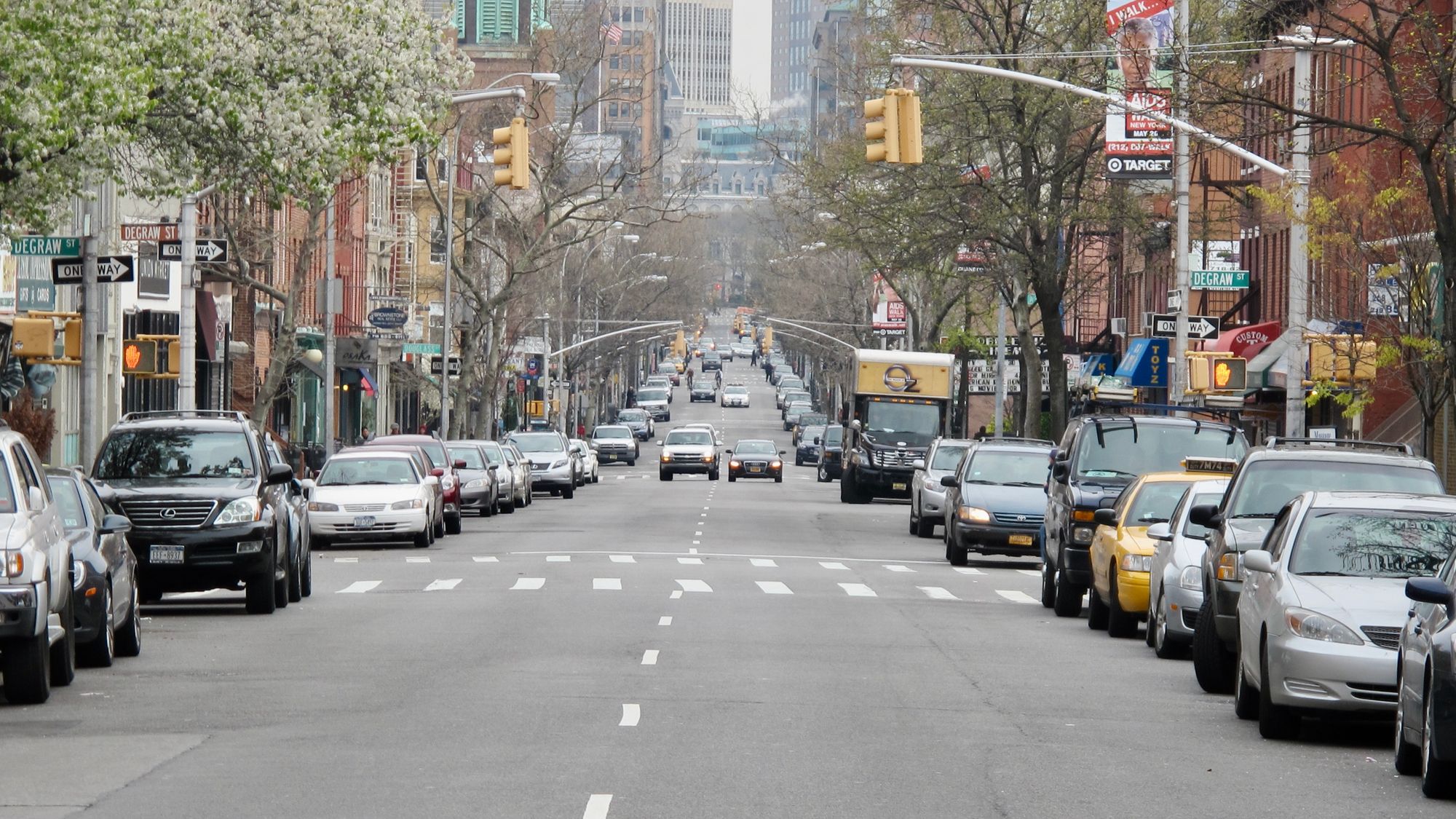
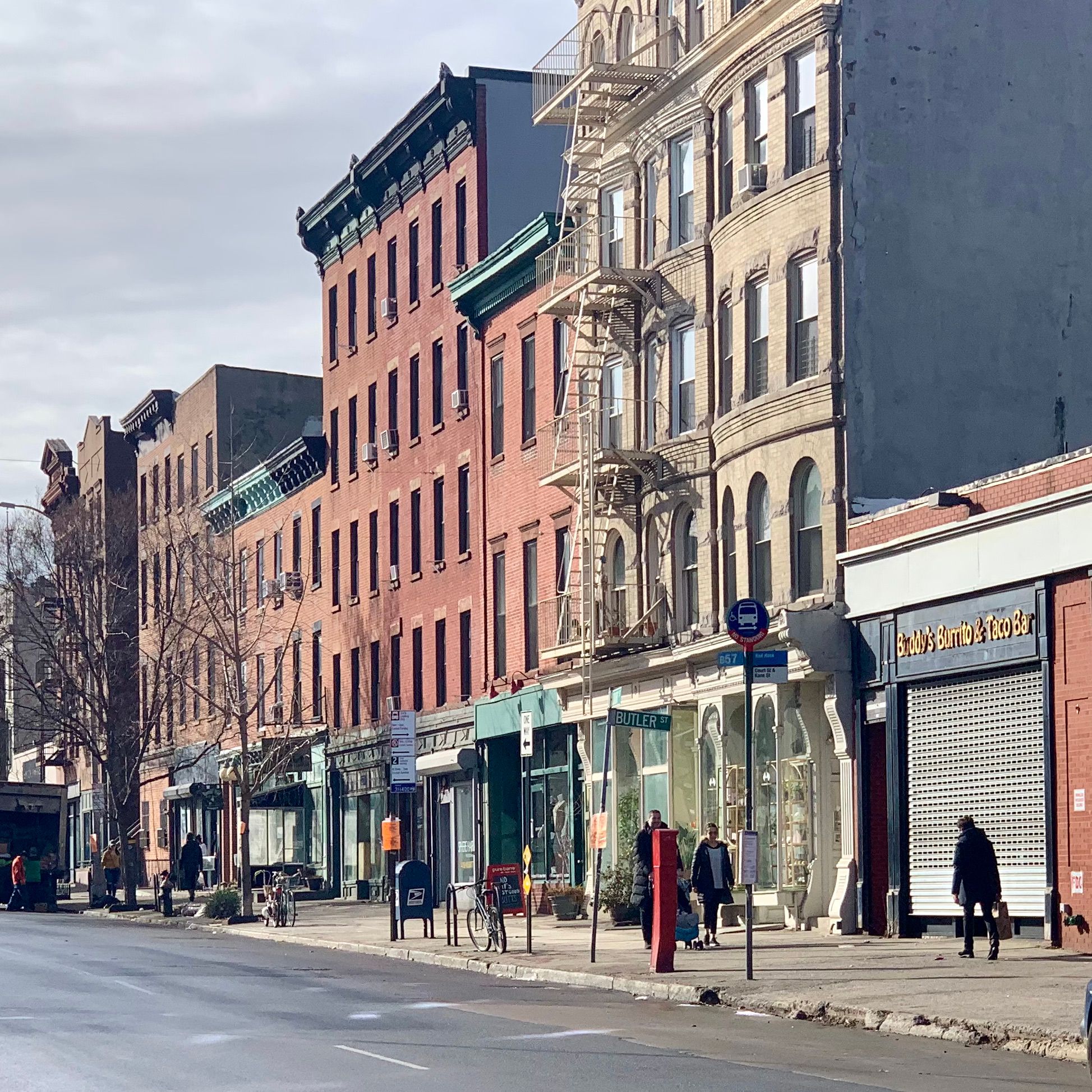
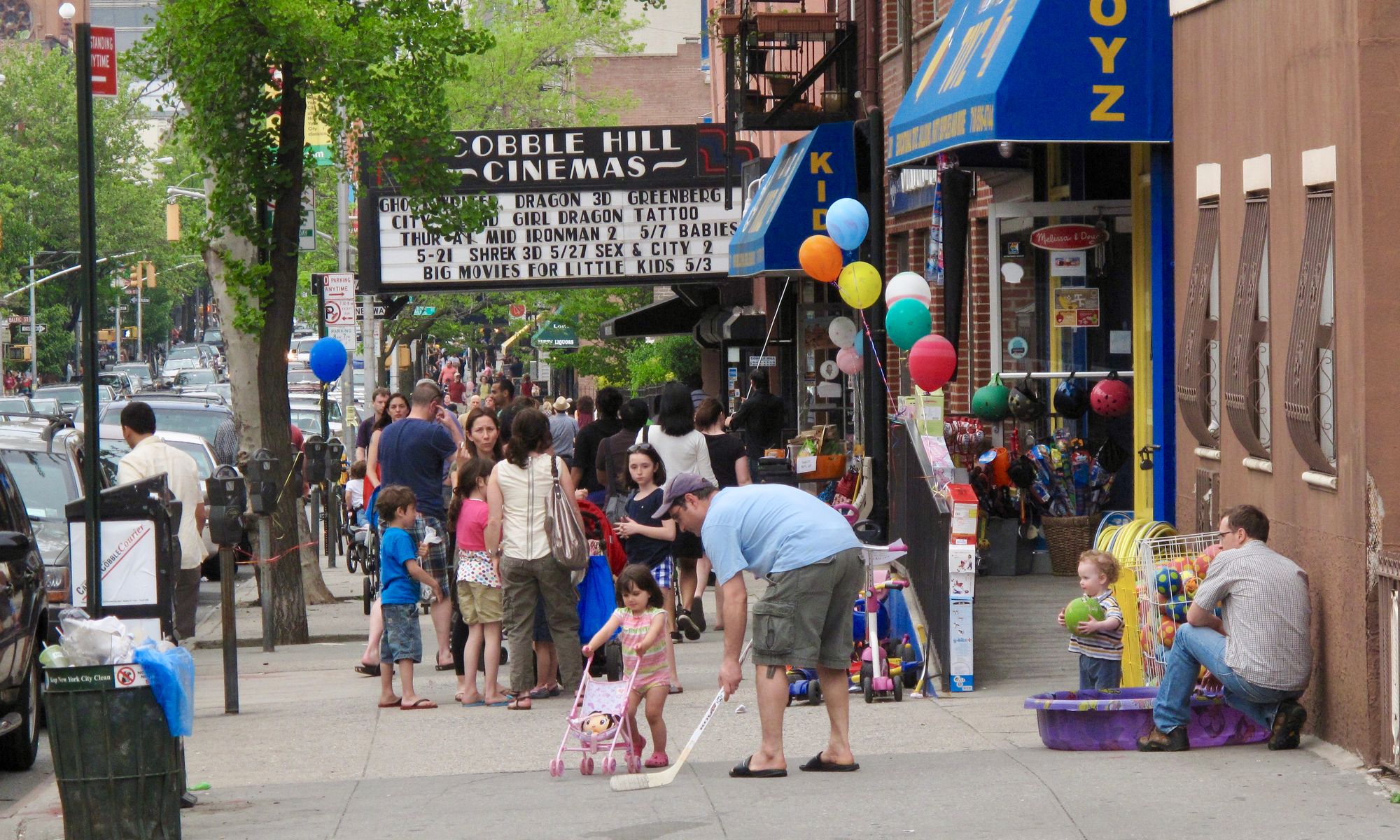
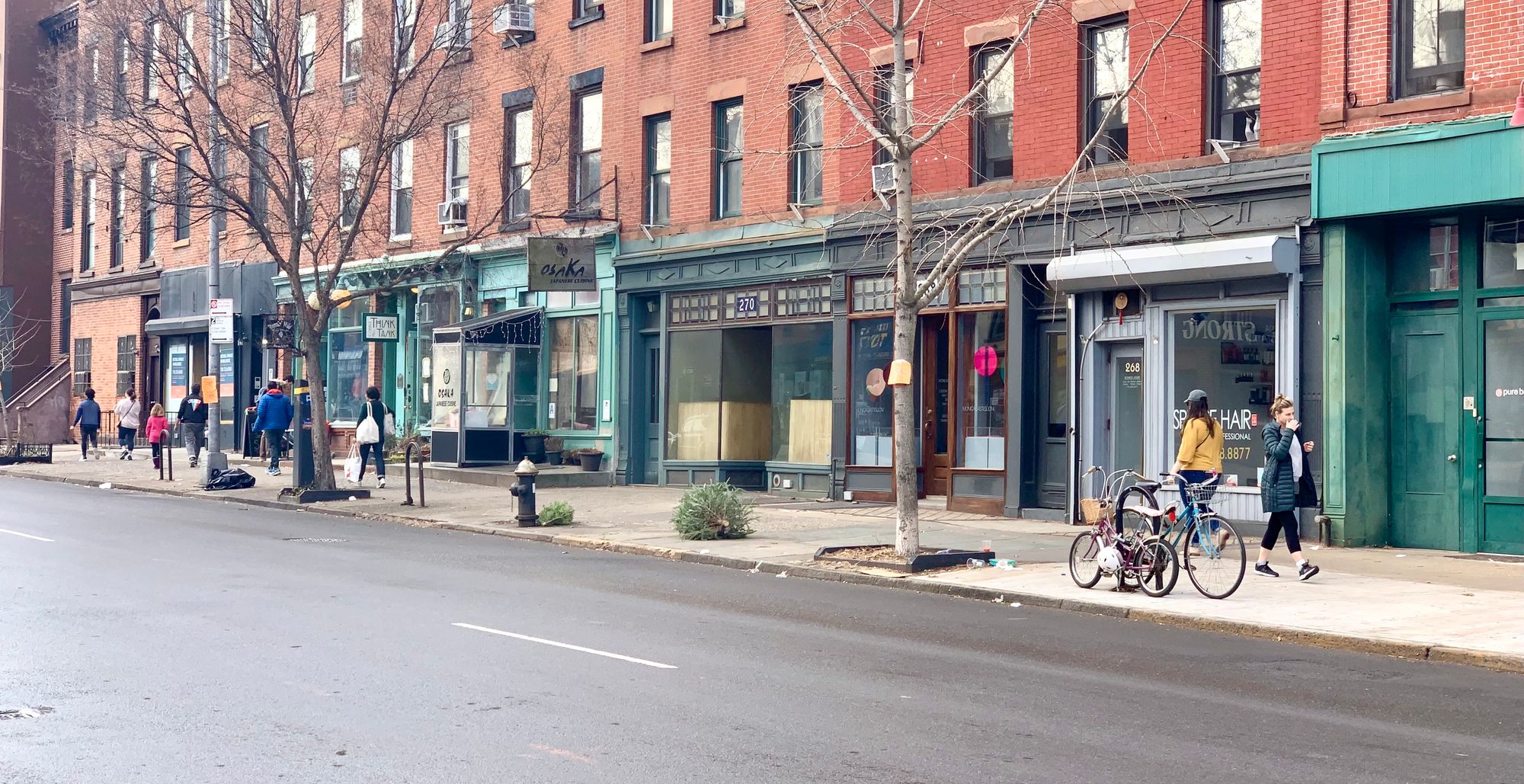
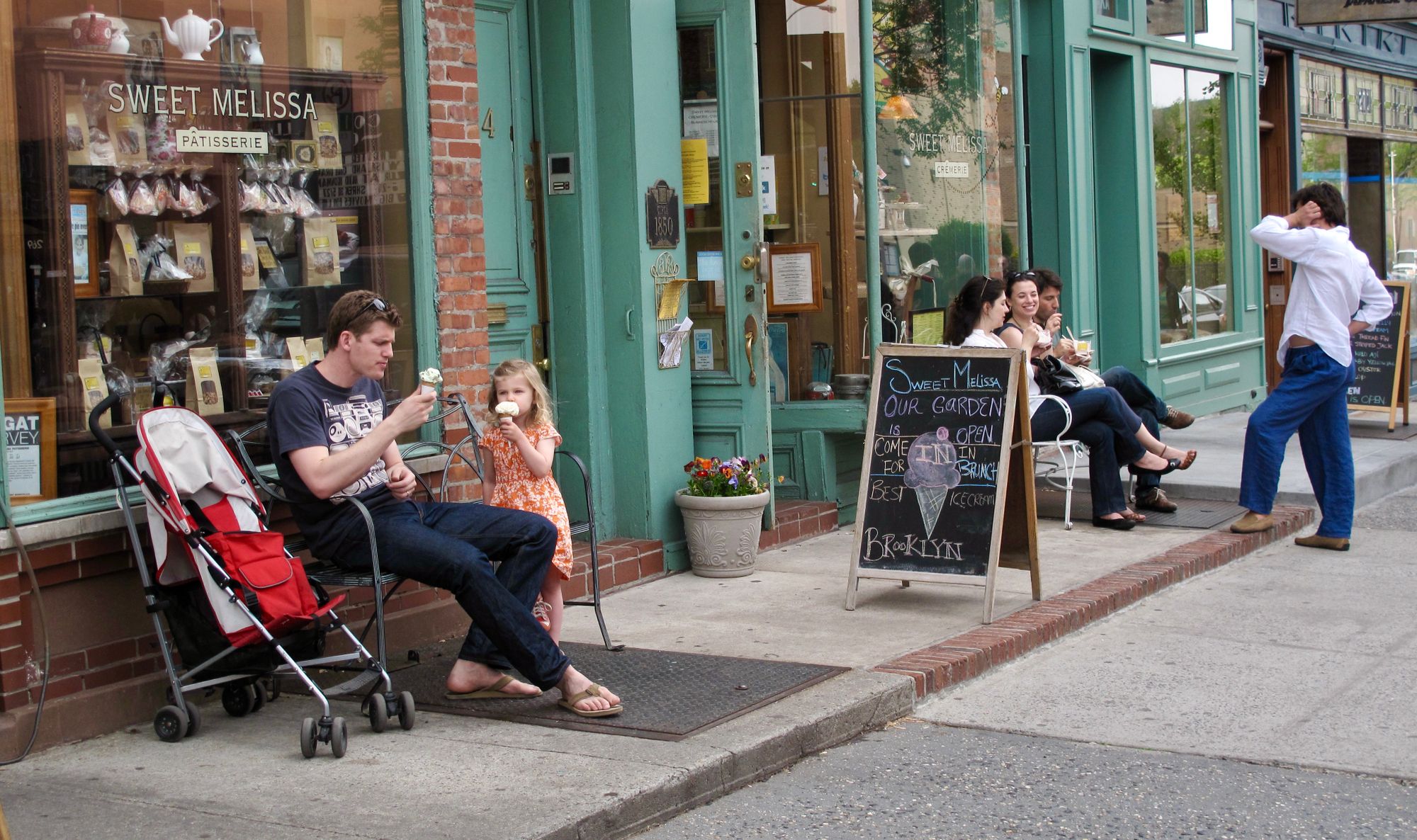
Court street during our time living here. We have seen a lot of change.
There're other larger discussion about Court Street, its cross streets, and two parallel streets in a future post, but here we focus on the Foster Building, now a centerpiece in the Cobble Hill section of Court Street. The Foster Building has been an epicenter of the transformations mentioned above: An example of adapting our spaces to fit our needs, especially in times of great change.
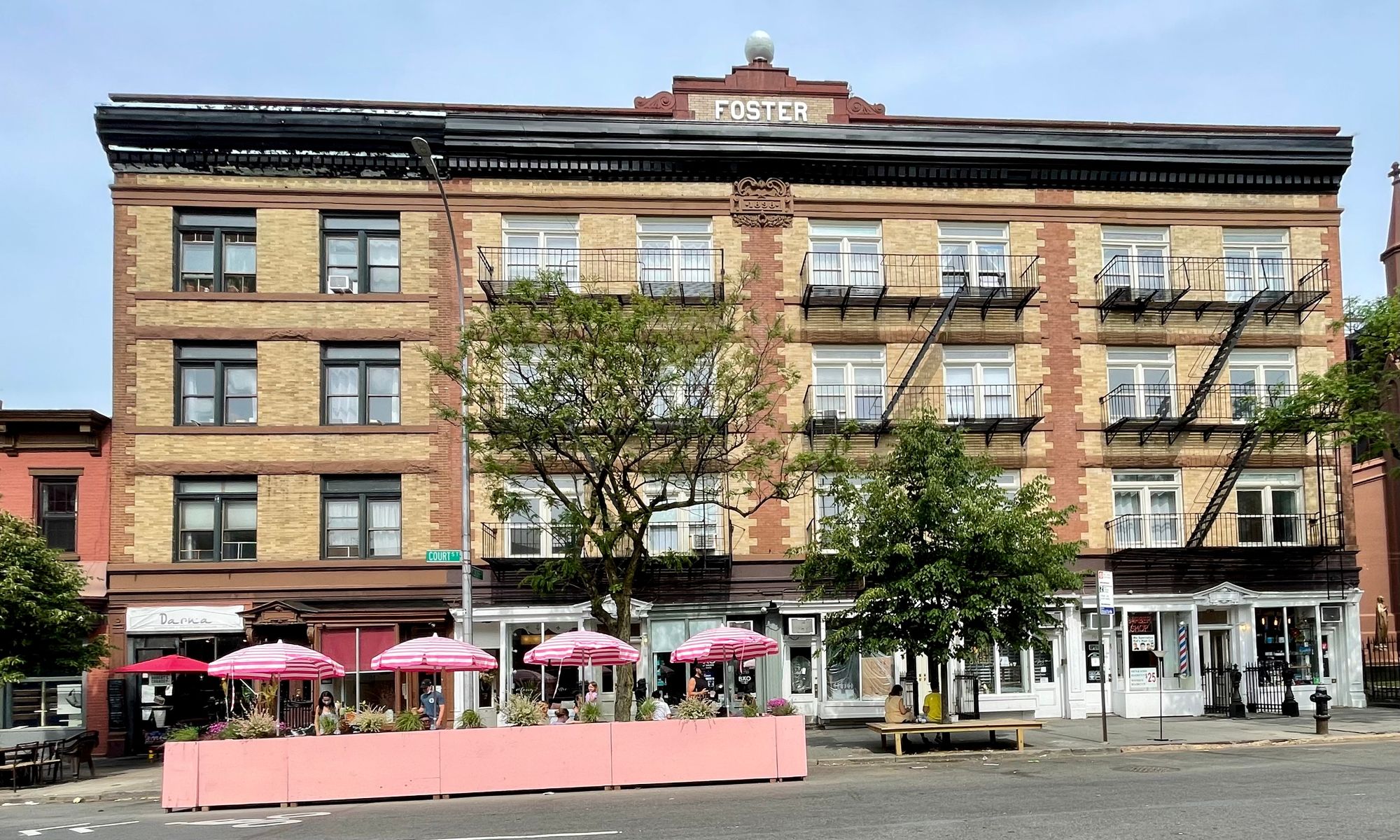
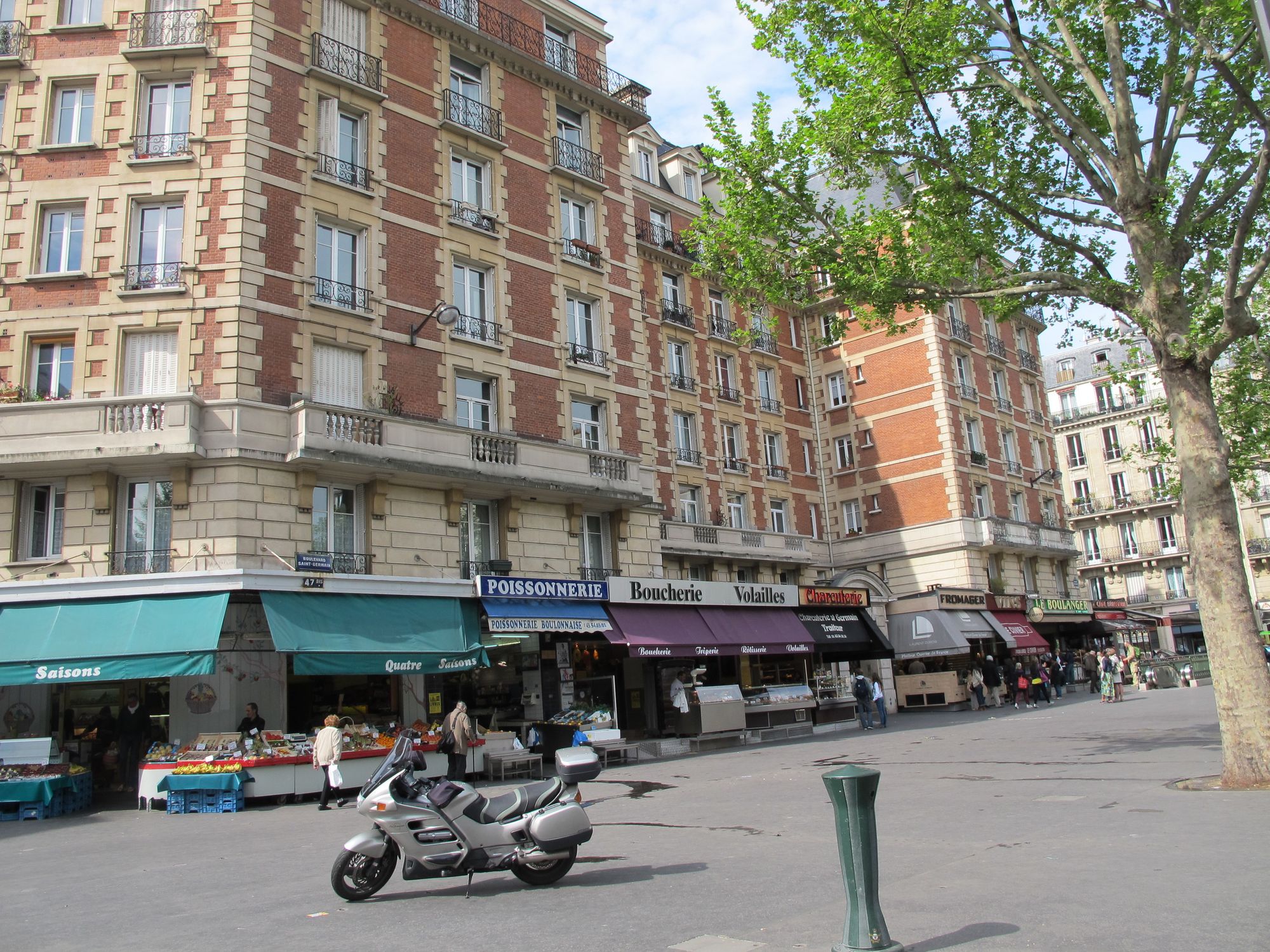
Cobble Hill, Brooklyn on the left and Place Maubert, Paris on the right
Inside out and double-loaded sidewalks
As we've written before, turning storefronts "inside-out" revives local economies and social life. Storefronts that spill onto sidewalks and restaurants that have outdoor cafés have long been fixtures on great sidewalks. Adding to that, we have seen an explosion of "double-loaded sidewalk," something new as a result of the COVID-19 pandemic. Double loading is when there are amenities and activities on both sides of the pedestrian walkway.
Double-loaded sidewalks not only accommodate the spillover benefits from storefronts and restaurants but also provide space for gathering – with a walking path in between. Having these two streams of activity means more opportunities to spark social interactions. Walking between vibrant storefronts, cafes and seating that often occupies former parking spaces, makes a lively place to walk as well as sit down and stay awhile. We also see small children roaming freely near their parents and caregivers in these situations because the barriers between pedestrians and cars makes it safer to do so.
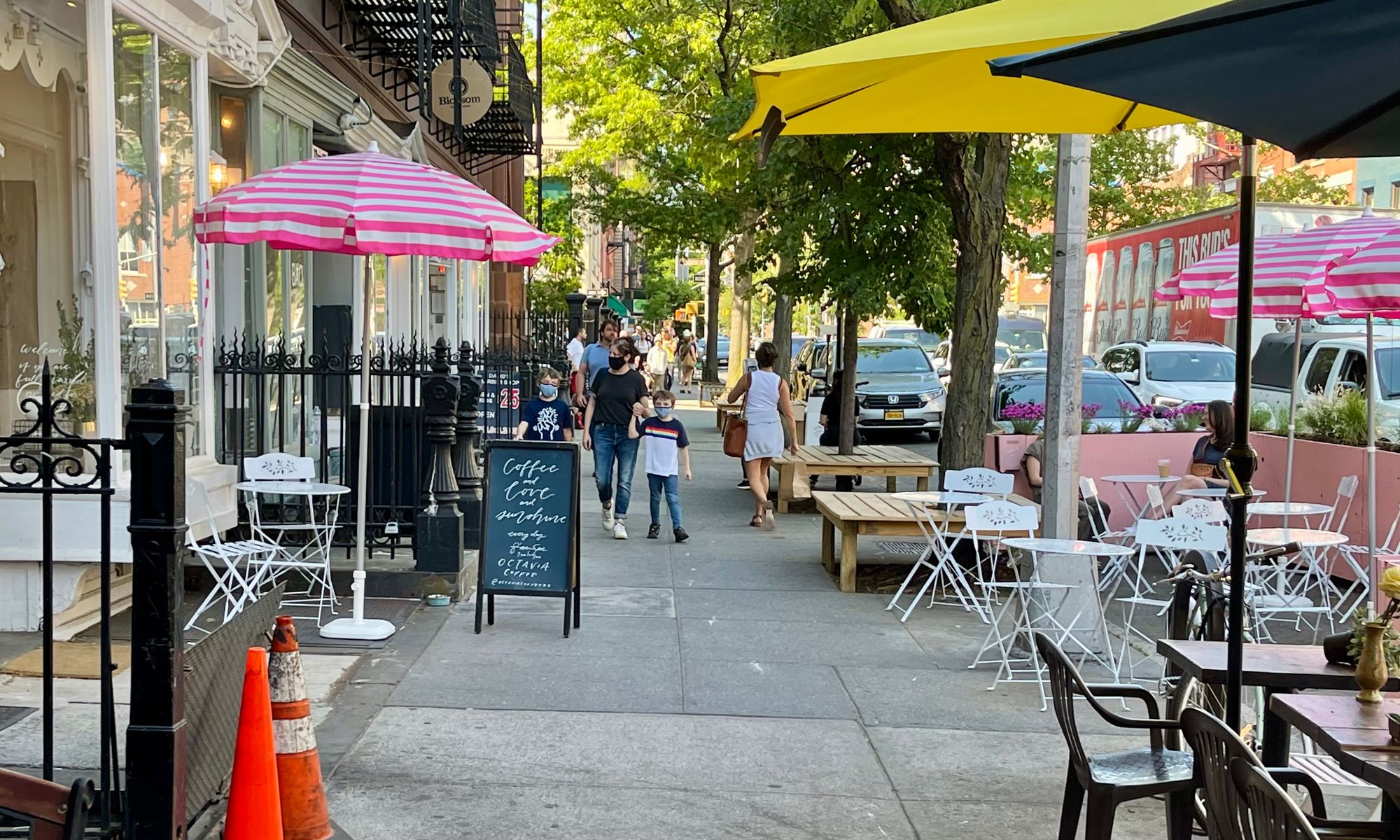
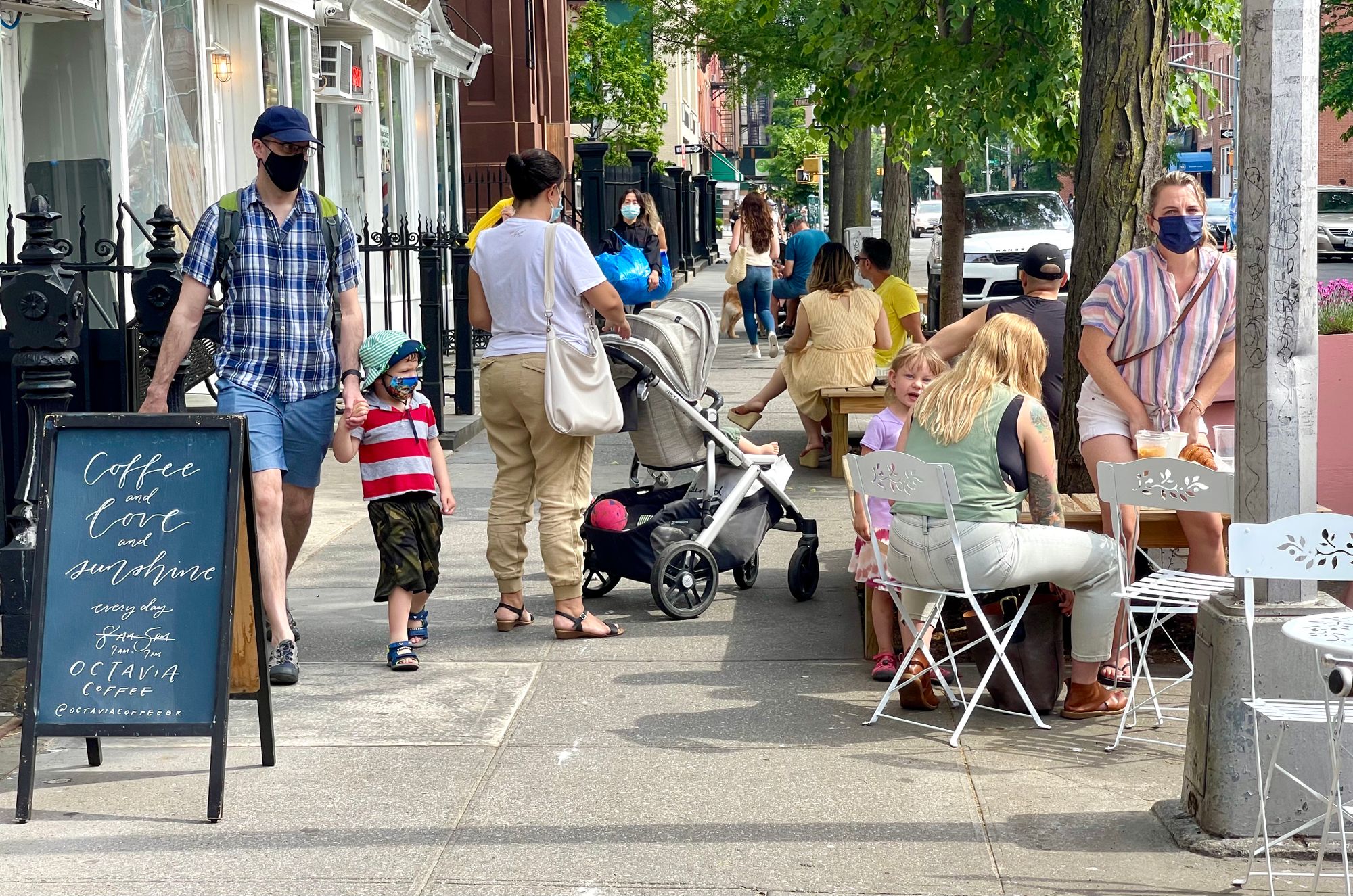
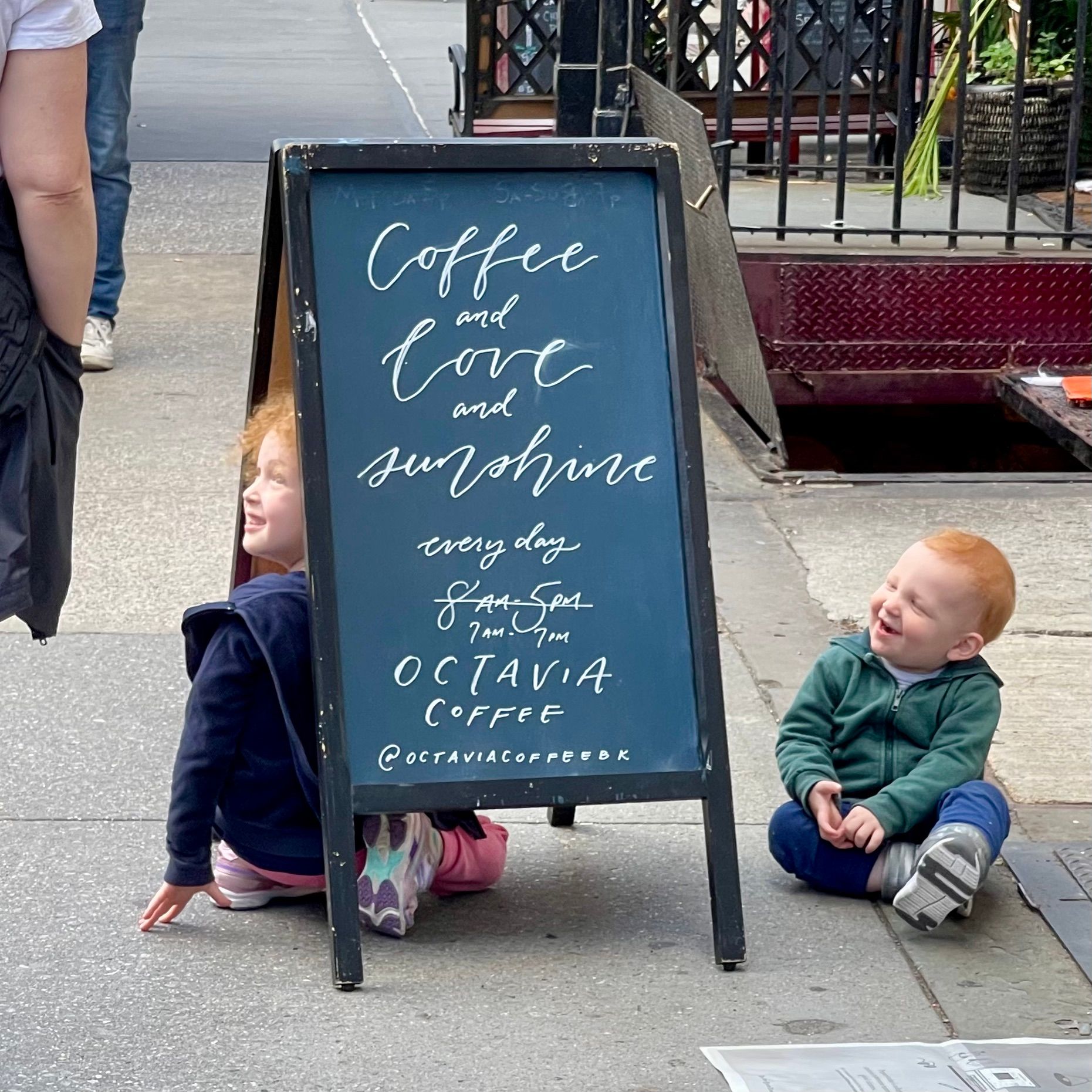
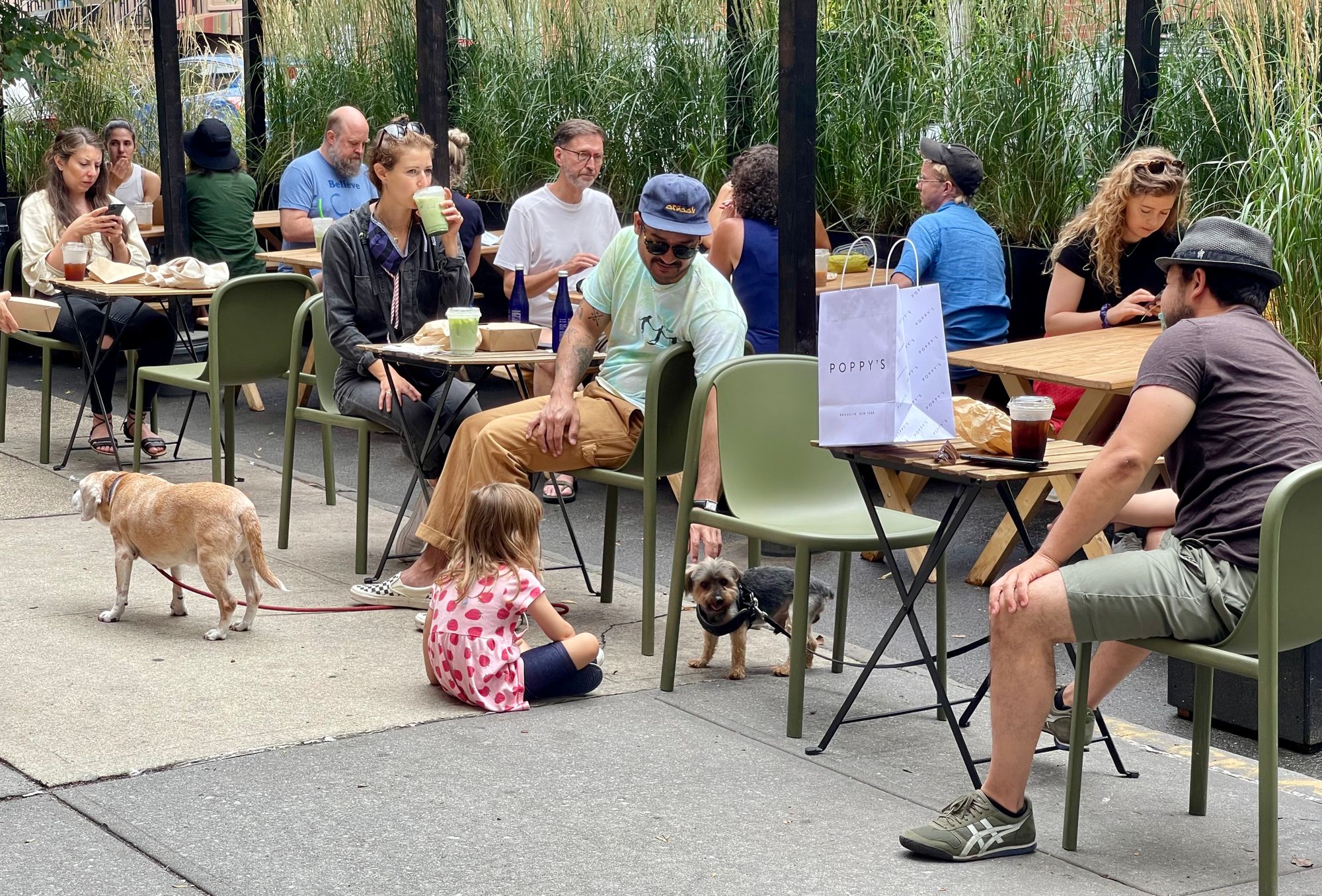
The two historic buildings in Brooklyn and Paris
The two buildings we would like to highlight here have their differences to be sure, but what they have in common is a building base that is open and engaging, with retail storefronts that are small and market-like in scale. Businesses animate the public spaces where they are located — and are successful as a result.
Both buildings have evolved over time. In Brooklyn, during the pandemic, small businesses that have only space for a few tables and chairs were allowed to take over parking spaces where there is now extensive seating and cafes. In Paris, an adjacent street was closed, creating a space for a now-popular marketplace that operates a few days a week. These changes to public spaces made a difference, but it was the design of each building that really set the stage for success.
The Foster Building in Brooklyn
The historic Foster Building along Court Street between Warren and Congress Streets enlivens the area. It creates a hub where folks gather to eat, get a haircut, and shop while providing a place to meet or just people-watch. It has evolved over the past decade, and now is a shining example of what's possible with changes in sidewalk policy and some creative investments in place.
But first, let's look back in time: The image below is the Foster Building in pre-pandemic times. There was limited activity on this block and the small stores in the building had a lot of turnover.
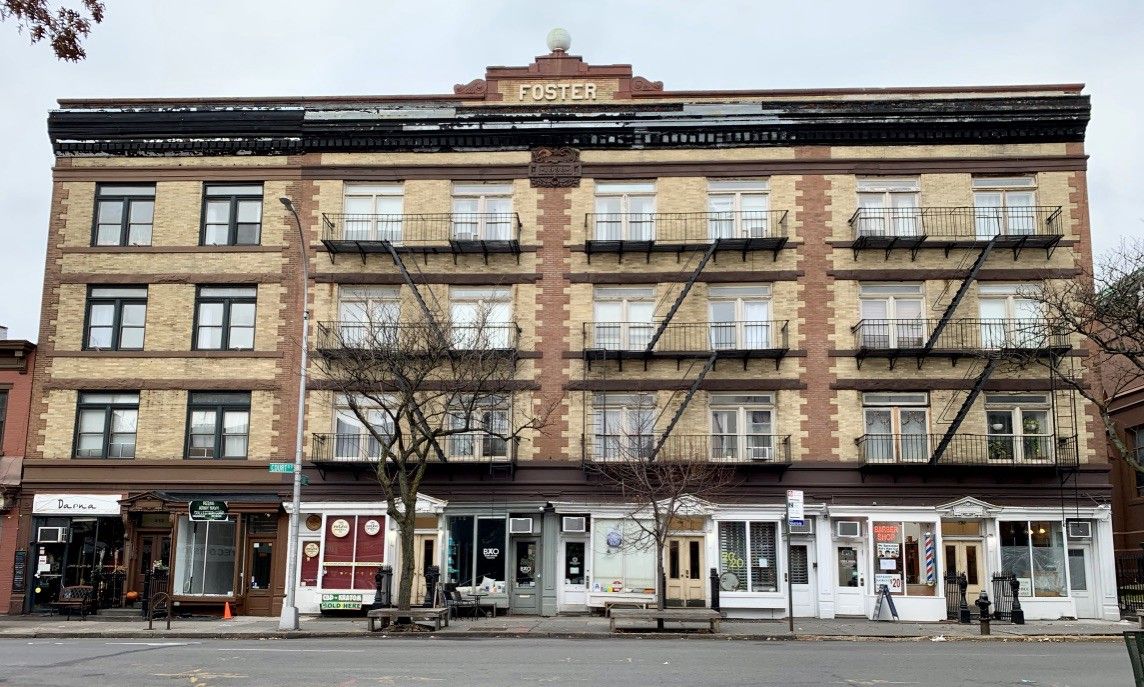
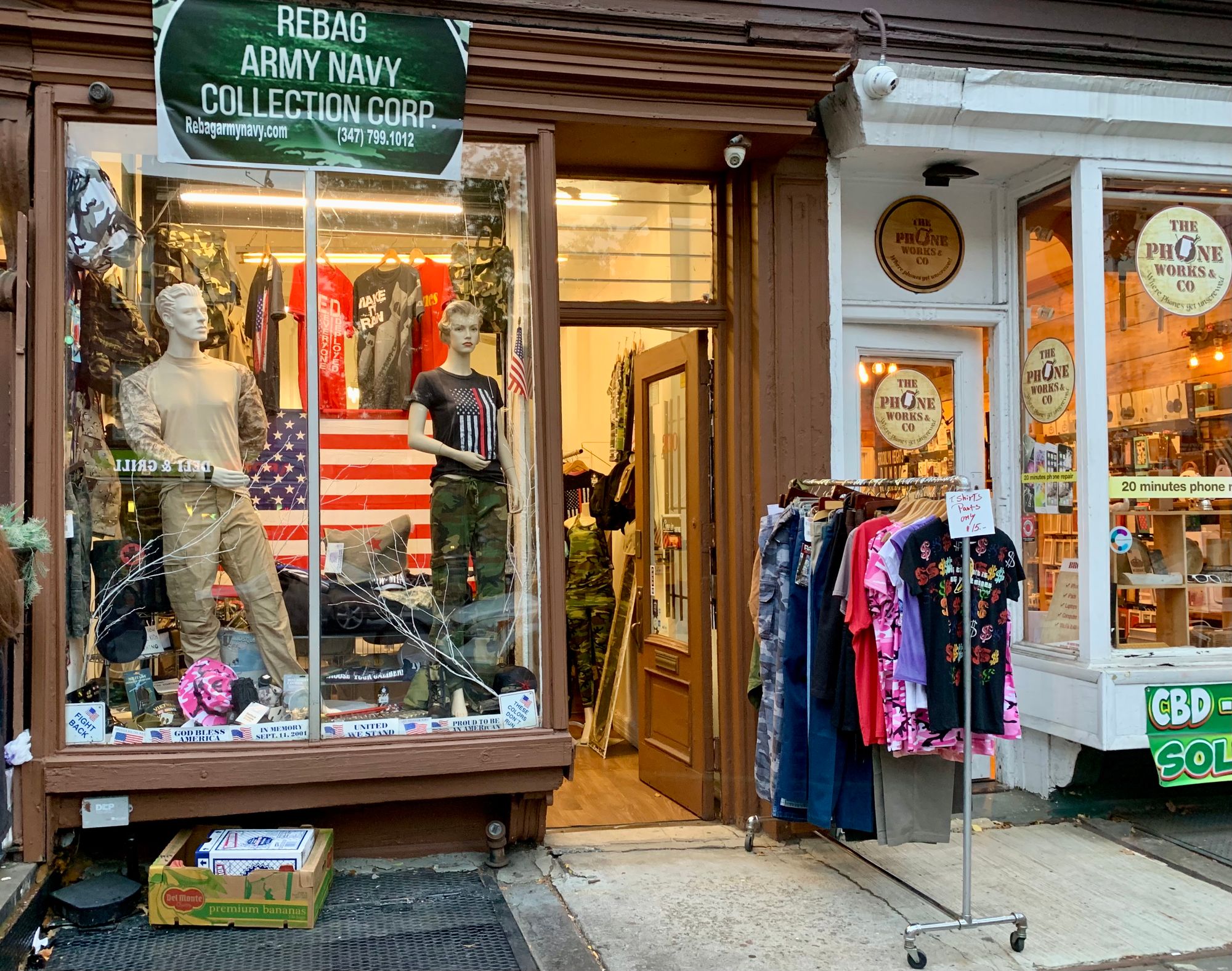

Before
Just prior to the pandemic, signs of new life began to appear along the sides of the building: Activity began to come outside in front of some of the small stores, and a few benches were added. But what really broke the ice was Darna, a small, mostly takeout, Middle Eastern food purveyor. After their arrival, the sidewalk started to come alive.
The transformation begins with "illegal" seating
These benches, located at the curb, are technically illegal but when called "tree guards," the seating is generally not questioned. These "tree guards" quickly became a fixture in the community and other similar "benches" began emerging around the neighborhood. This simple bench became transformative and spurred other businesses on Court Street to add seating in front of their stores or restaurants.
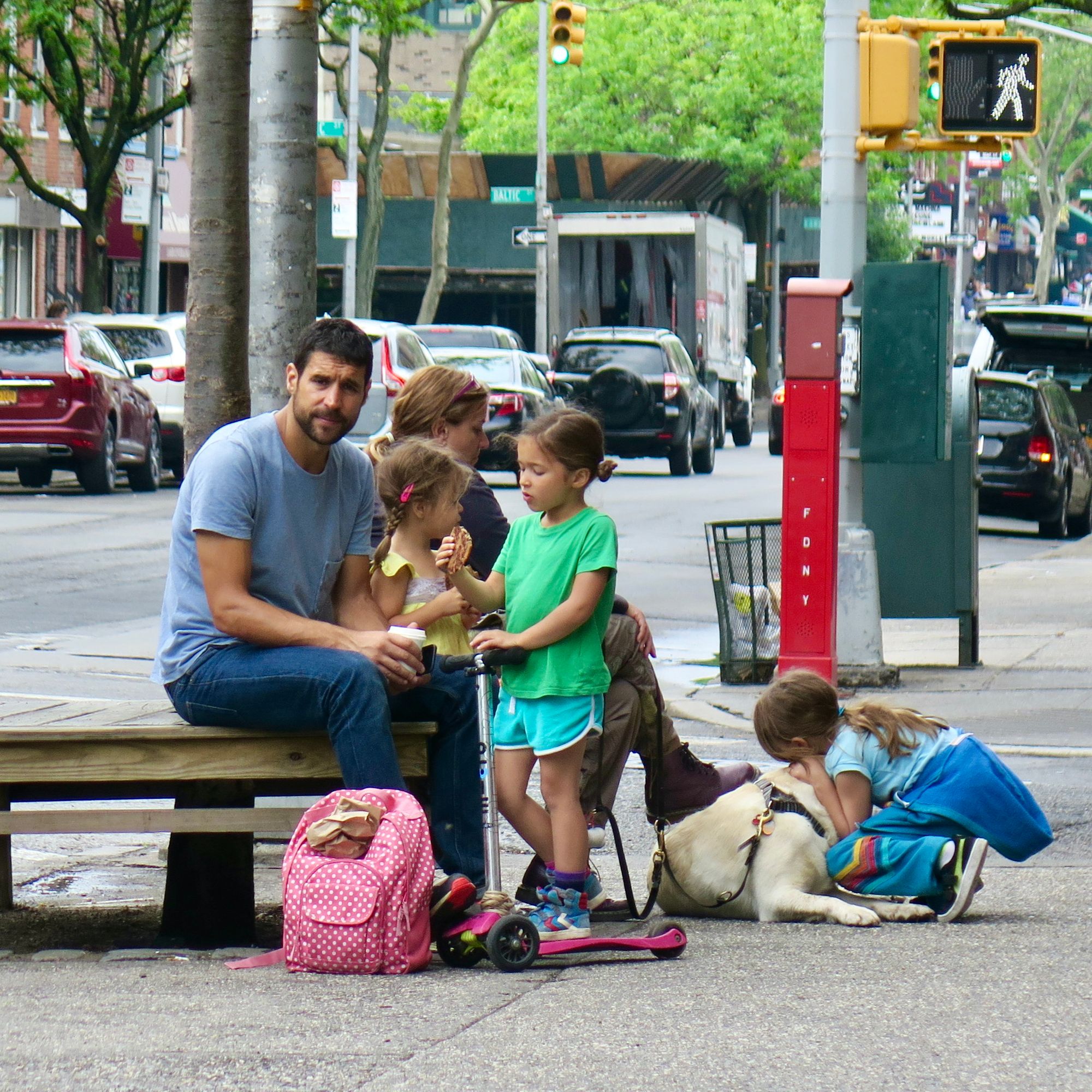
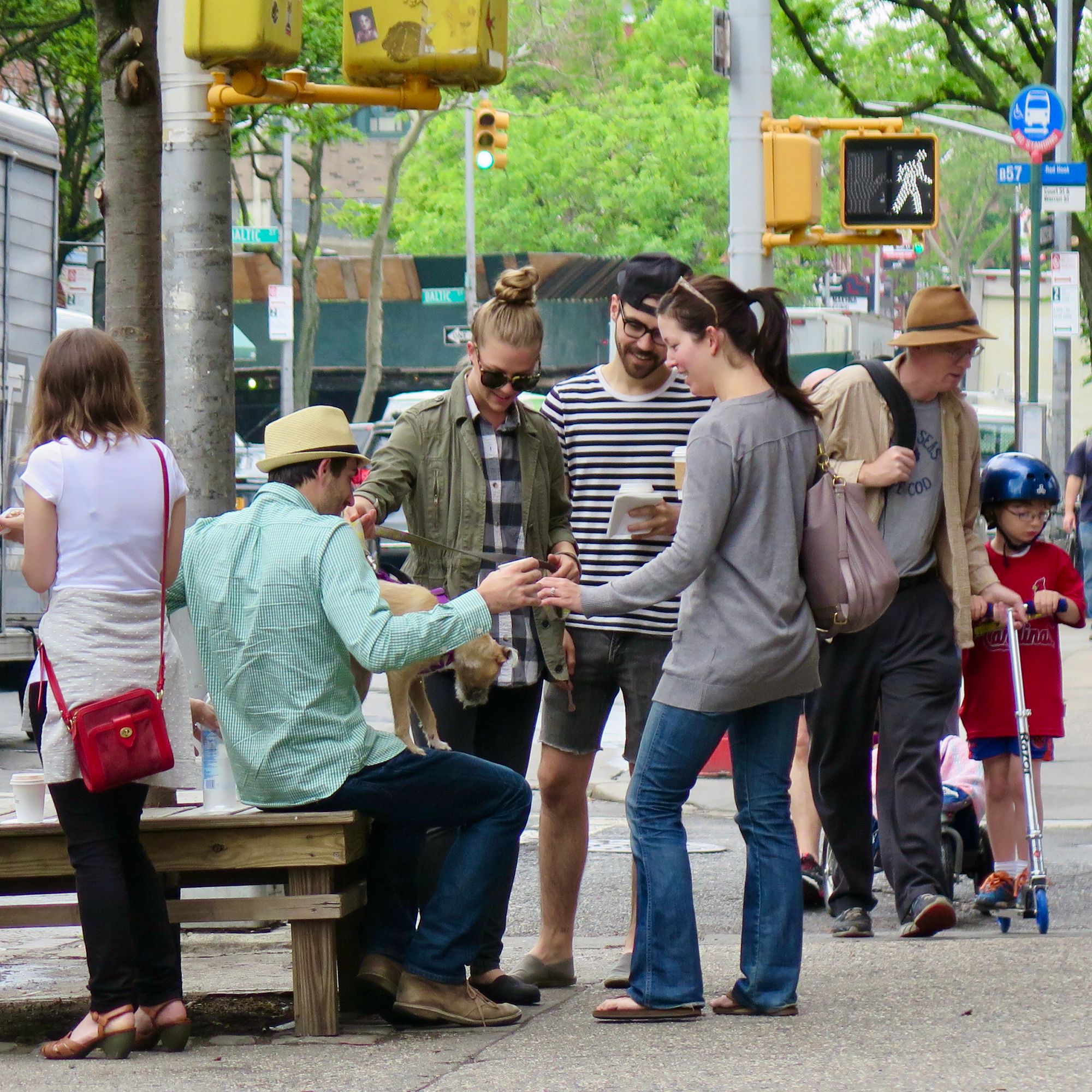
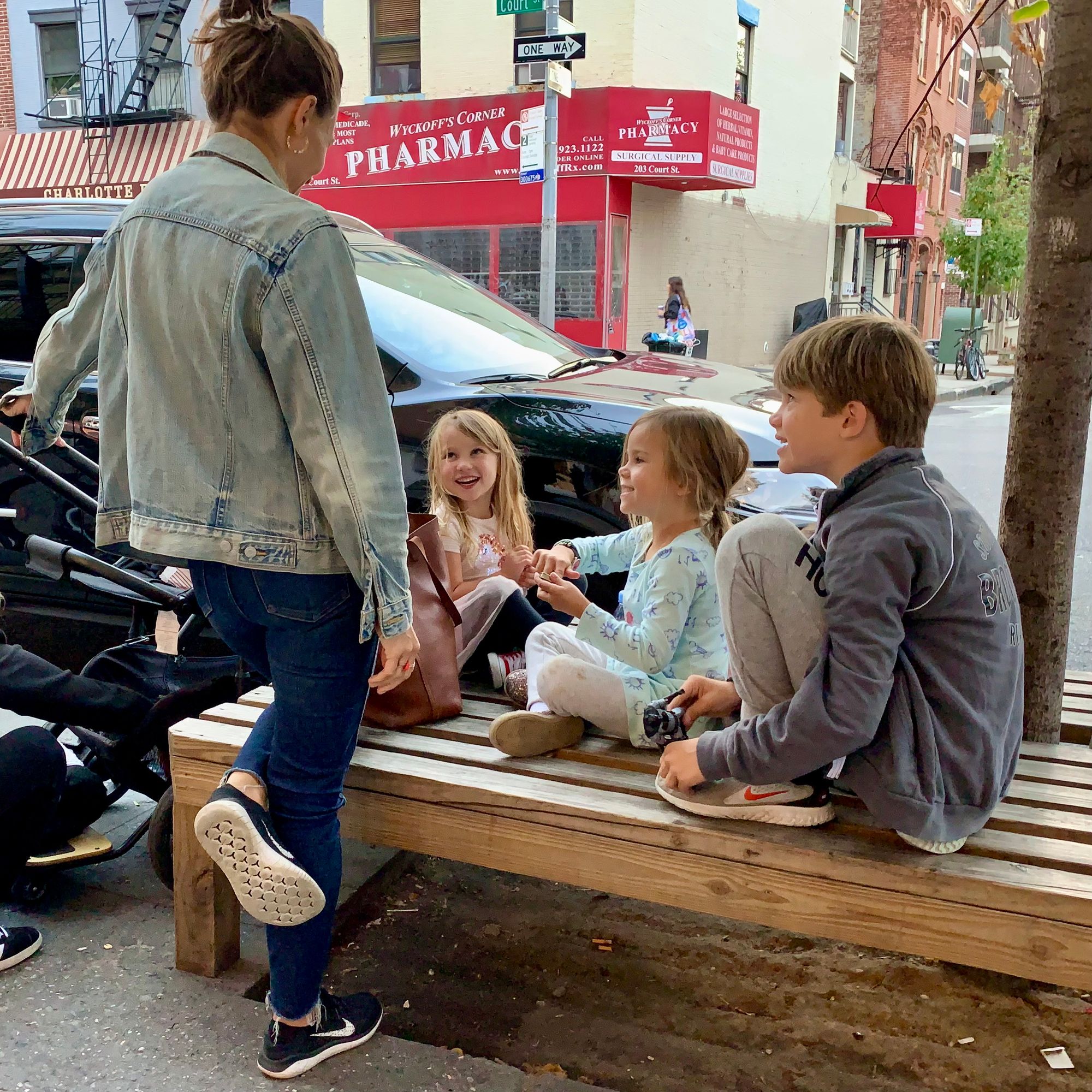
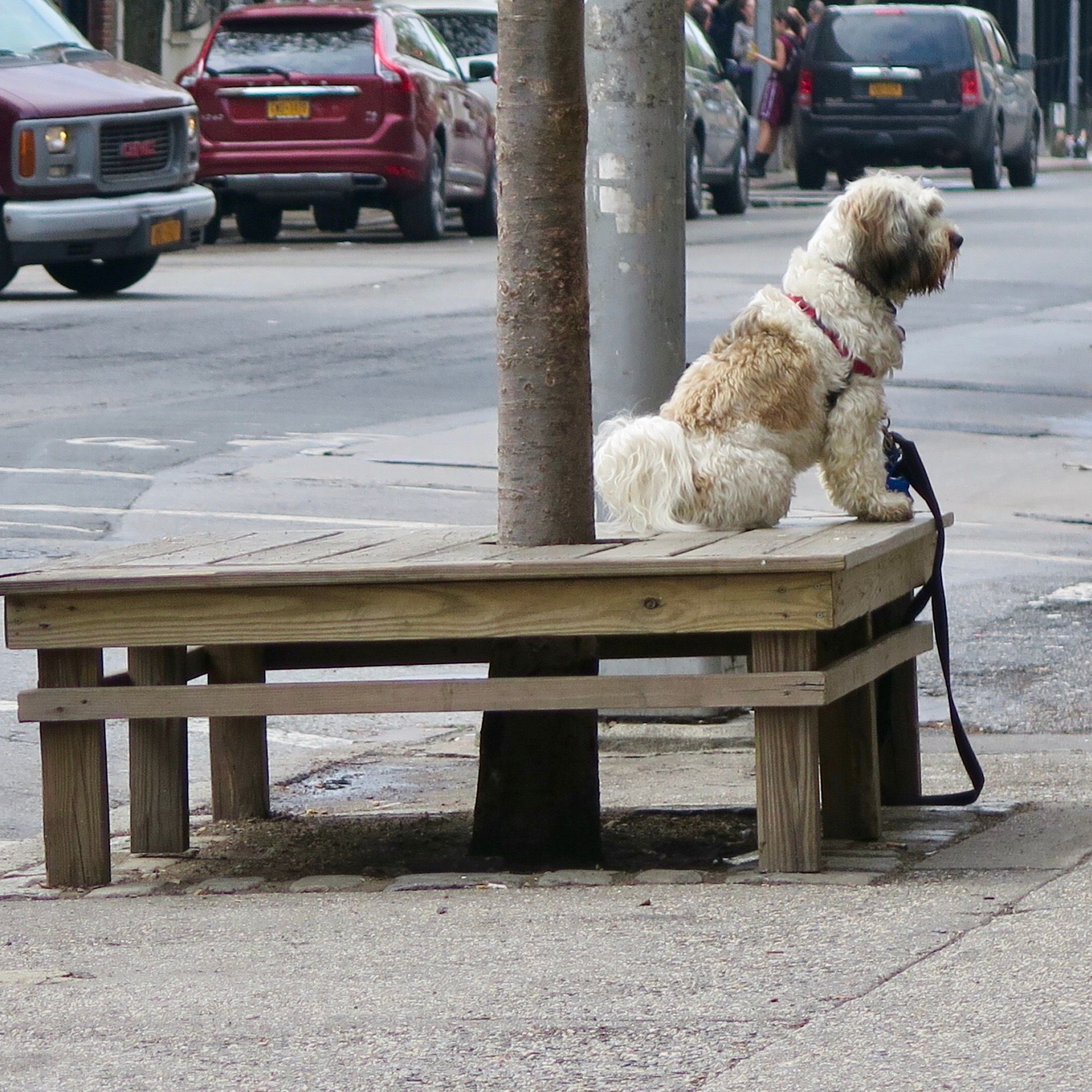
Prior to the pandemic, there were very few outdoor cafés, mostly because of oppressive regulations and difficulty in getting approvals. During COVID-19, regulations were relaxed in order to save New York City's restaurants. Because people were not able to eat indoors, cafés blossomed in front of restaurants which – to get adequate serving space — used sidewalks and extensions into the street. Darna led the way and added cafe tables and chairs to its "tree guard" and bench seating in front of the restaurant (which had been permitted before).
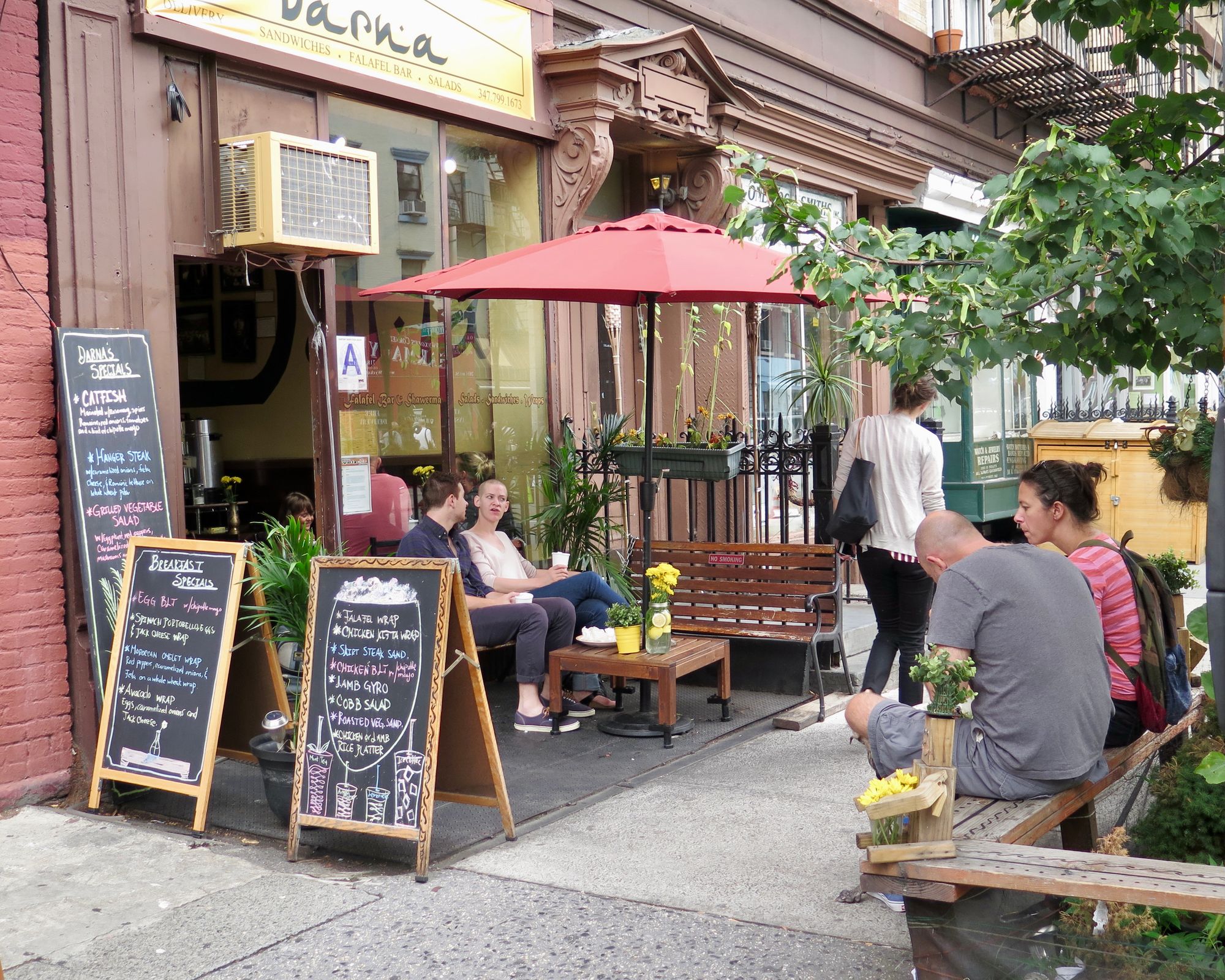
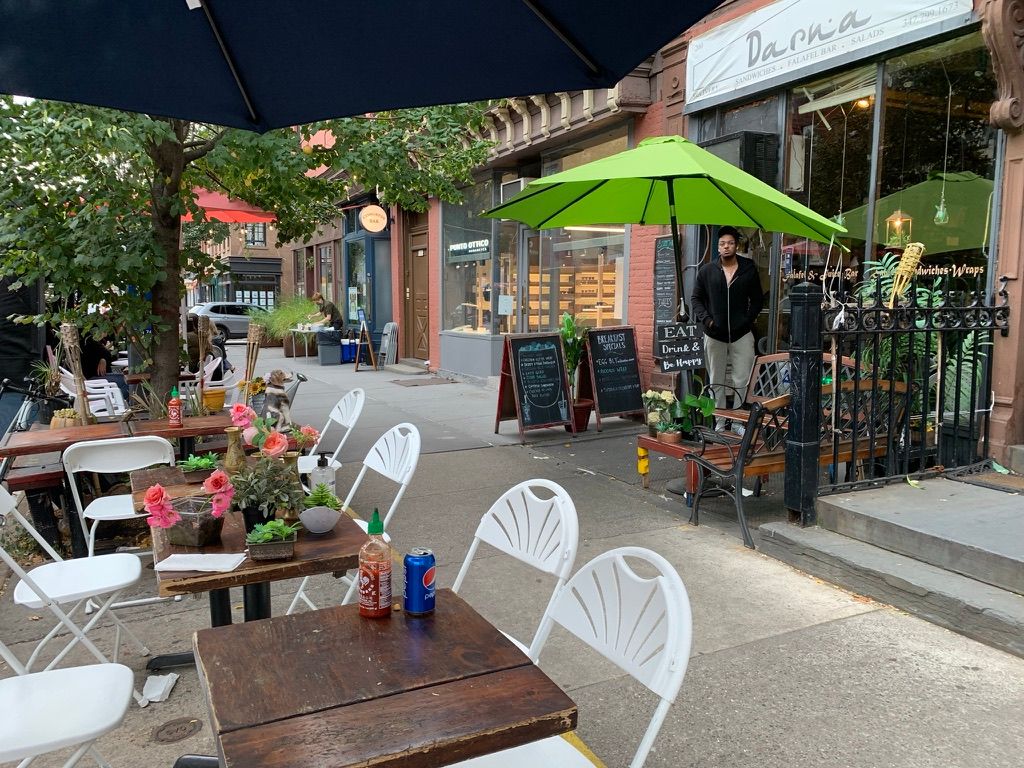
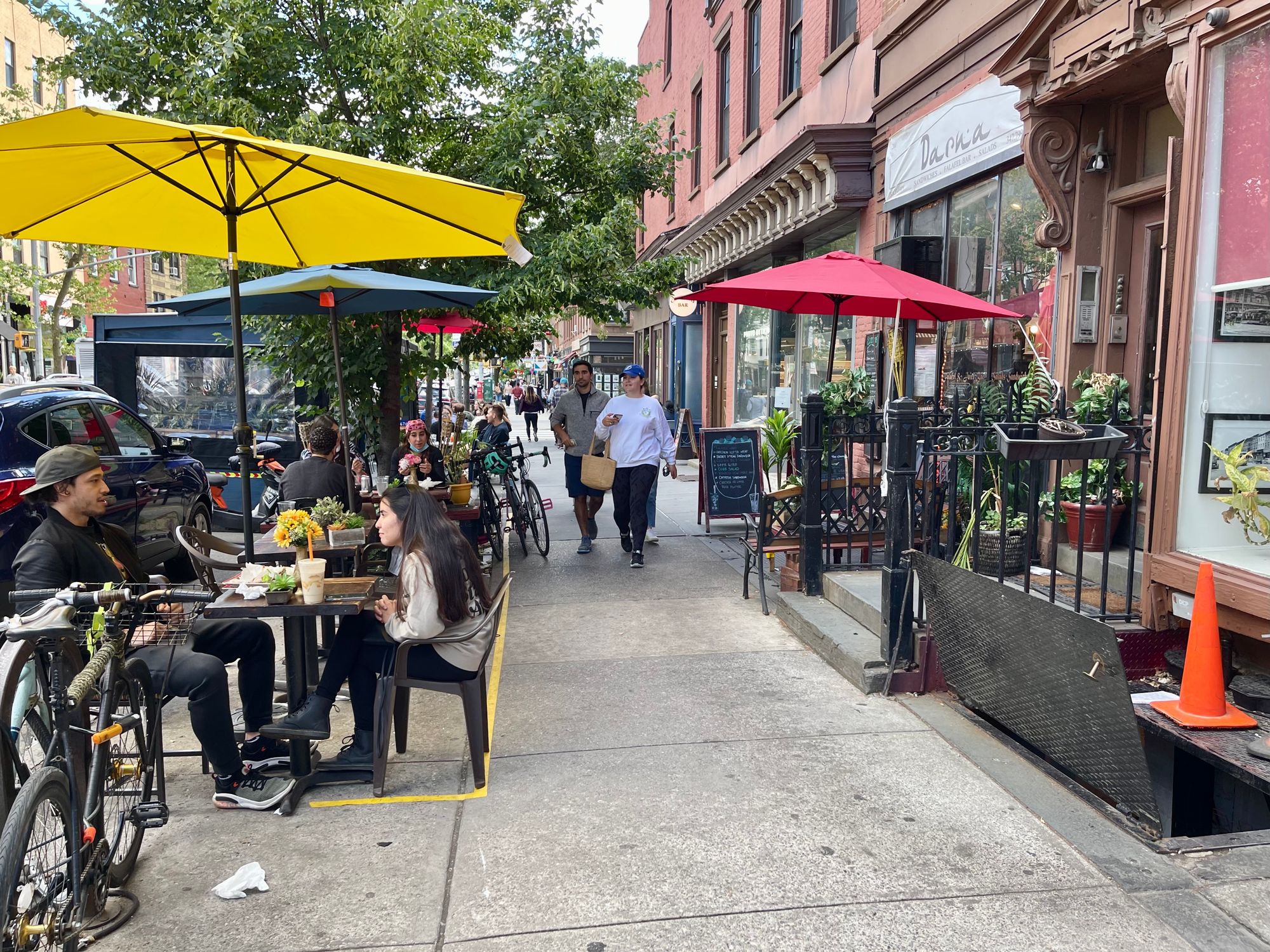

Sidewalks on Court Street were enhanced by the arrival of Darna, the first restaurant to introduce outdoor dining on this block years prior to the pandemic.
Other businesses followed
Other food and beverage businesses in the building and next door added their own cafés during the pandemic. Taking things one step further, they took over parking spaces to locate seating, thereby widening the functional area of the sidewalk significantly. Now double-loaded, the street is a wonderful place to stroll and hang out day or evening.
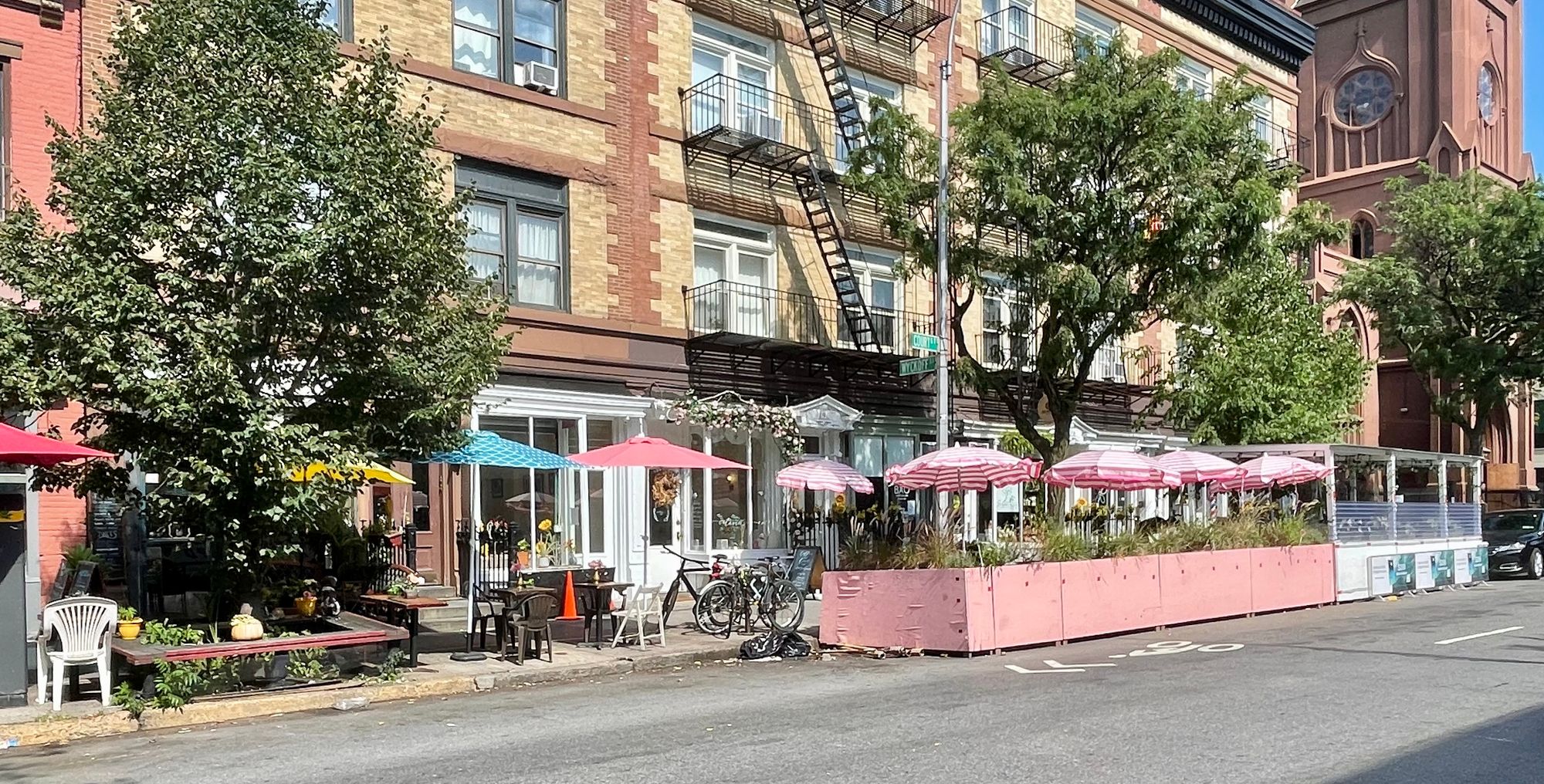
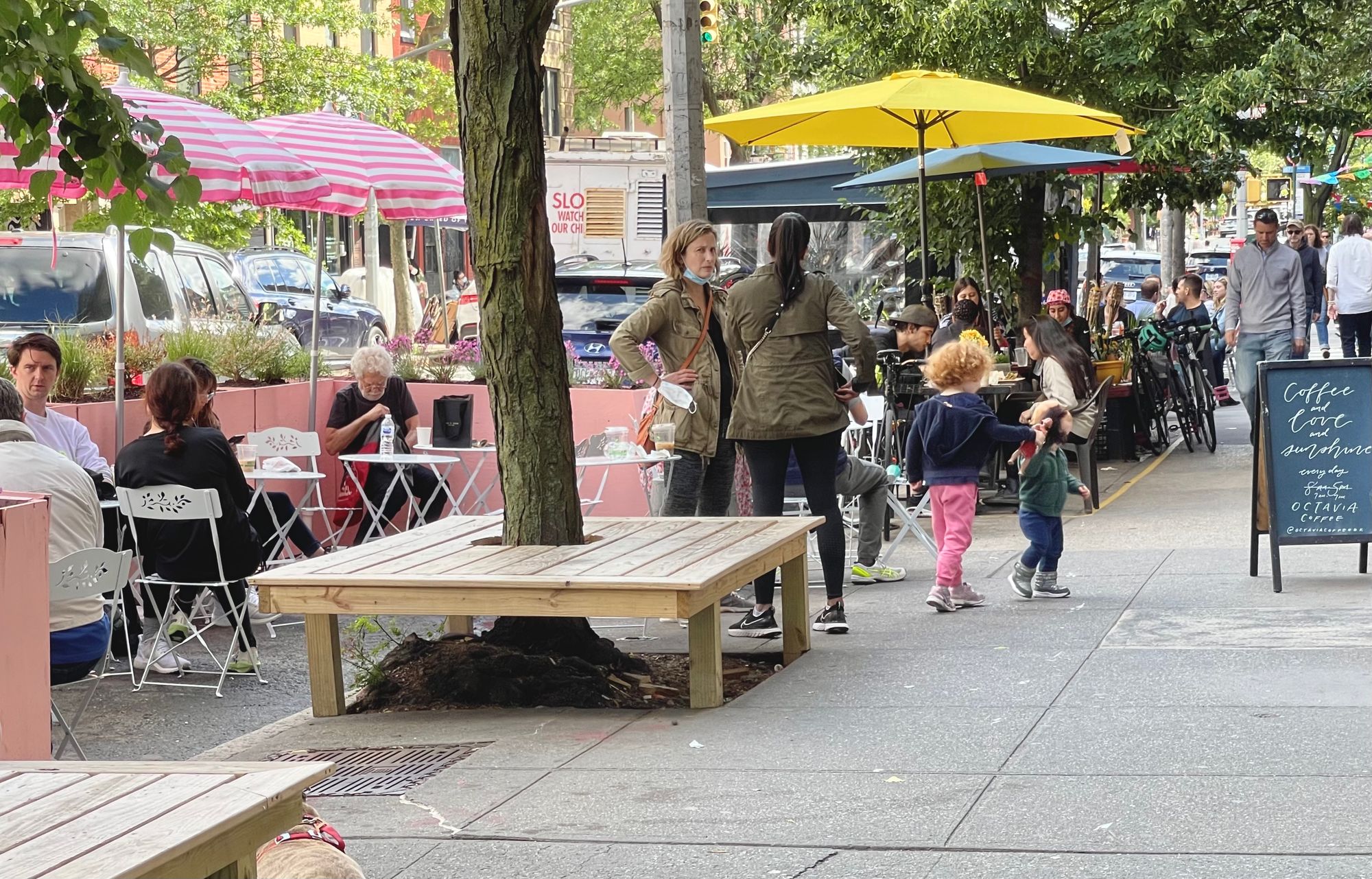
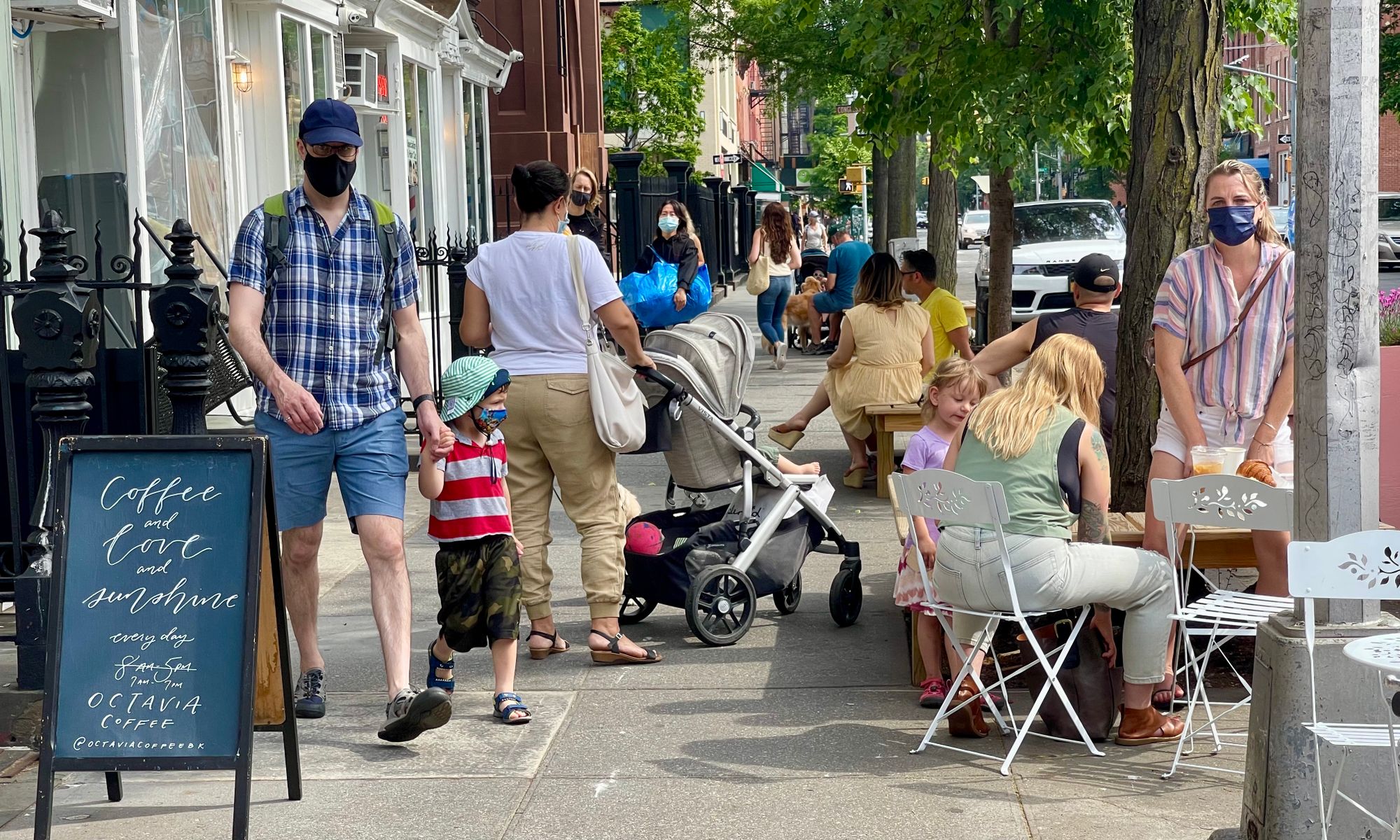
Additional small cafés, delicatessens, and a local bar flanked by small local salons continue to pave the way in "bringing the inside out." This spirit of welcoming and new energy can be observed in the diversity of seating options, planters, and floral arrangements framing doorways.
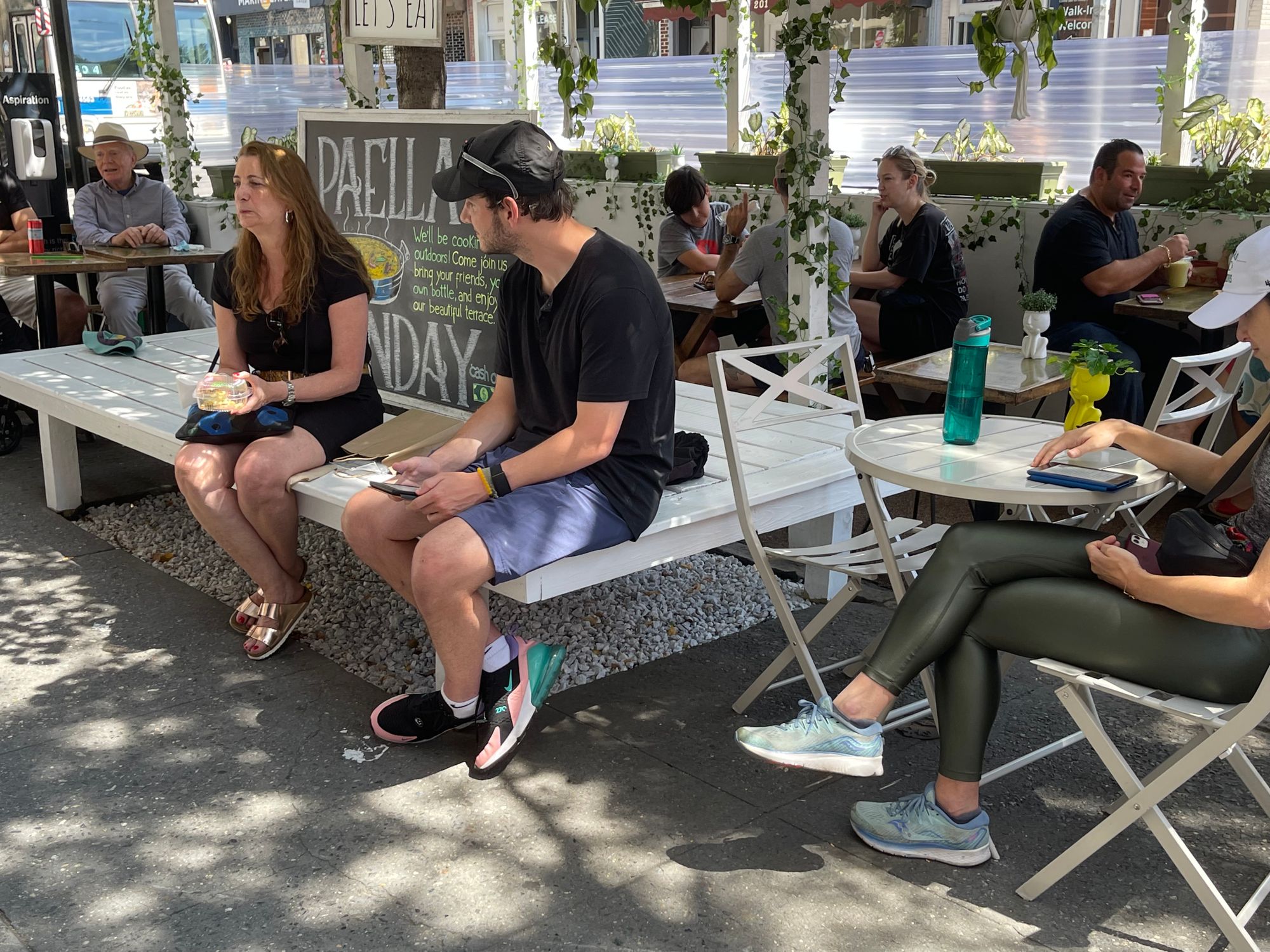
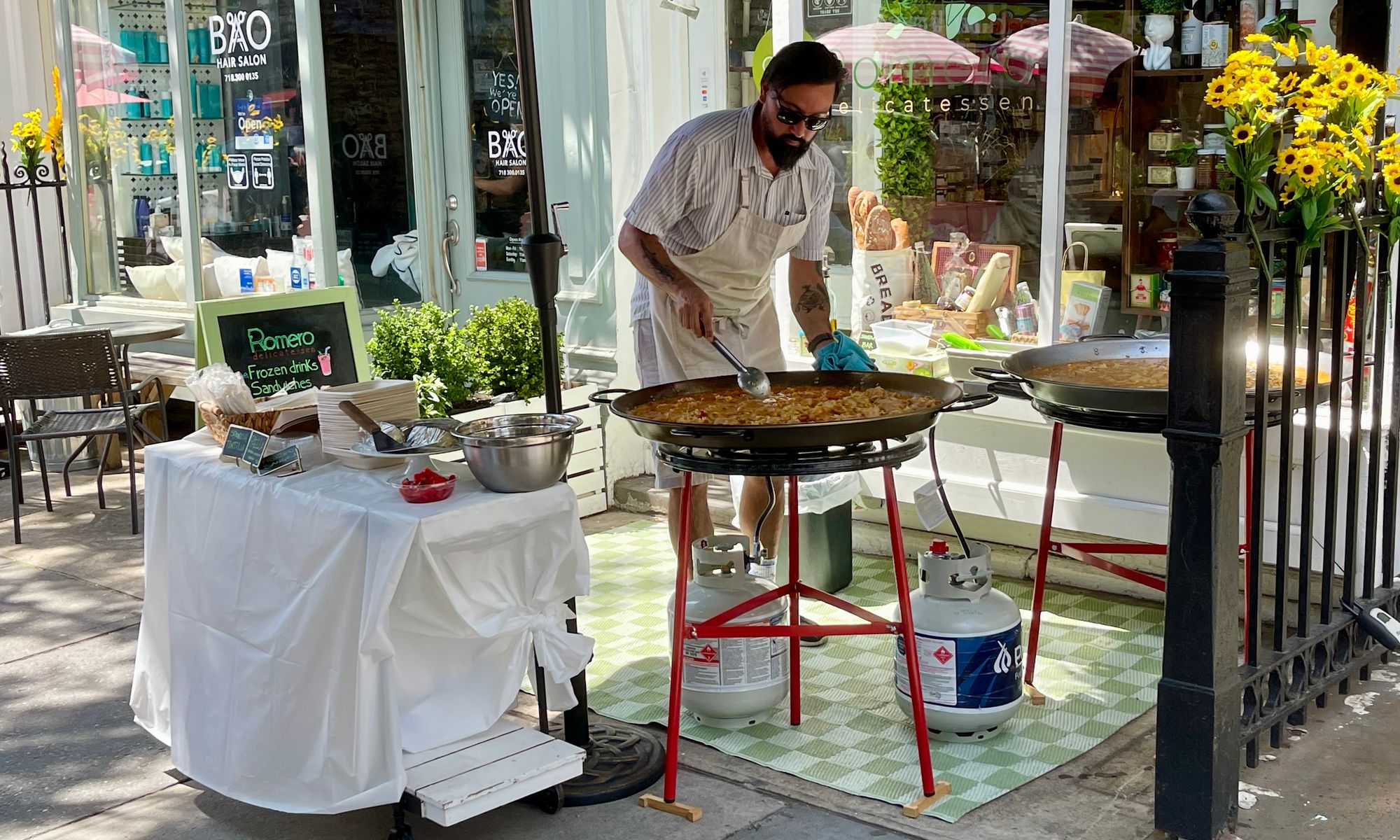
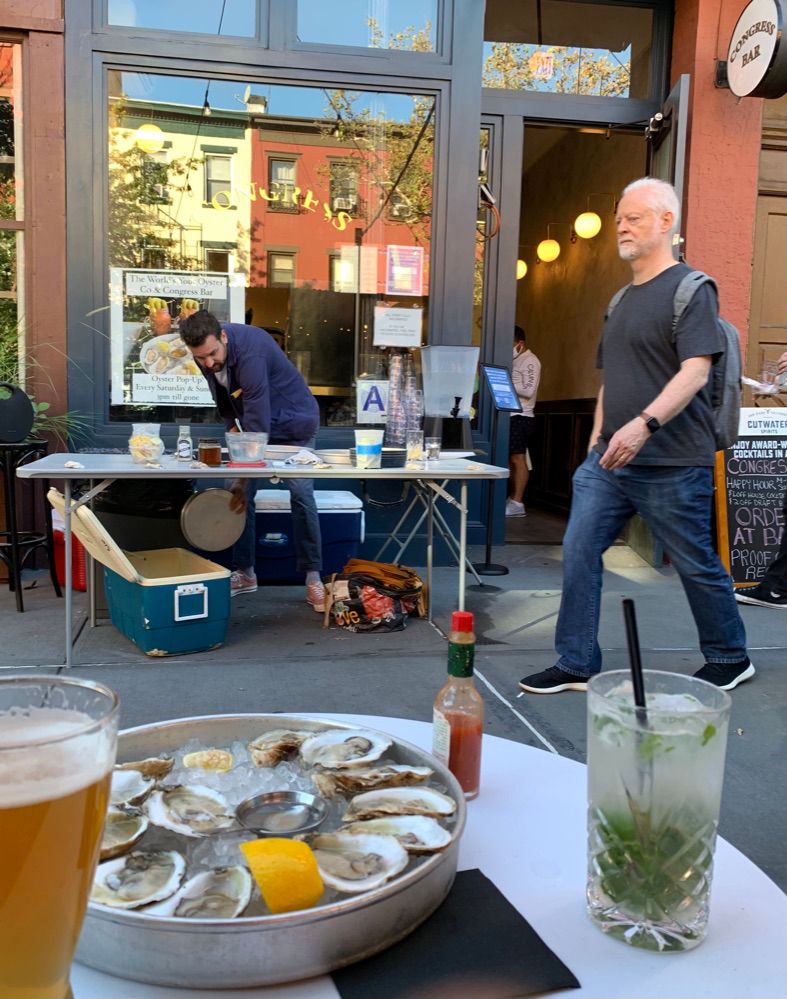
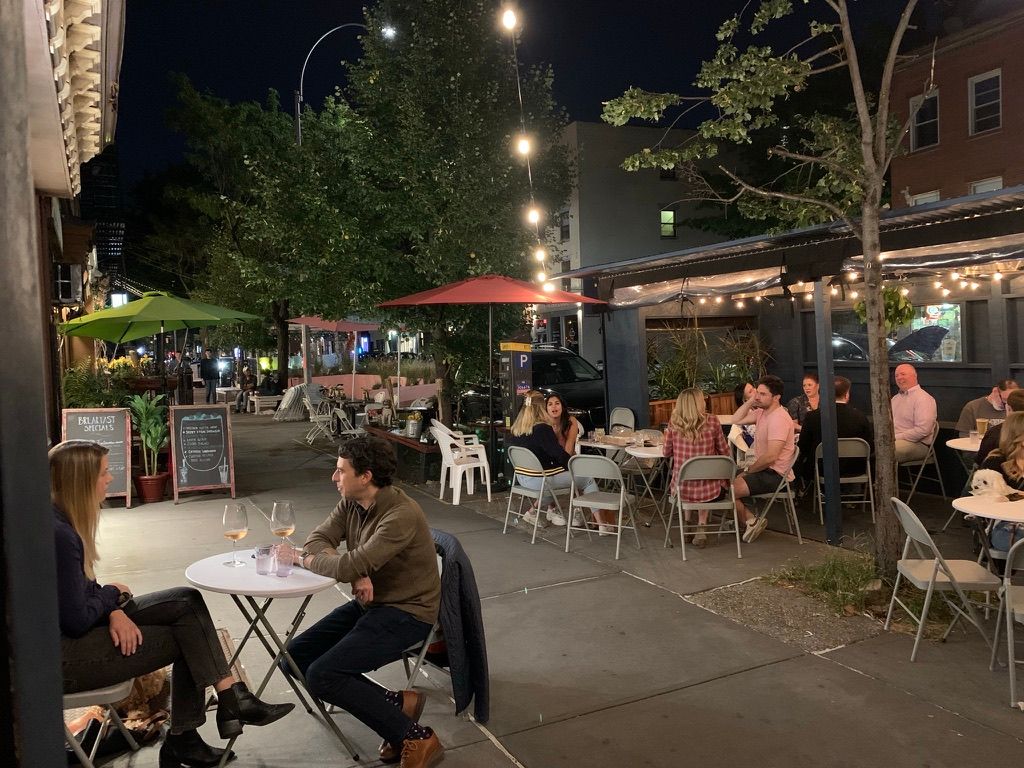

If we continue to embrace the ideas that communities are made by focusing on social life and local improvisation/placemaking, the future can be quite exciting —supporting a long-sought goal of a city that is made up of many villages. Every village main street is made up of a series of "hubs" that apply the principles we can learn from this example in Brooklyn: a place that has benefitted deeply from the spilling-out and widening of the social spaces around buildings.
47 Boulevard St. Germain, Place Maubert, Paris
When we first began our frequent visits to Paris more than 30 years ago, the area in front of the Georgian-style 47 Boulevard St. Germain was a street. Then, weekly markets were started, and later the street was removed. From there, the area in front of the building became a large plaza and marketplace. As a result of this string of transformations, the plaza, along with its popular markets, form a major draw to this day.
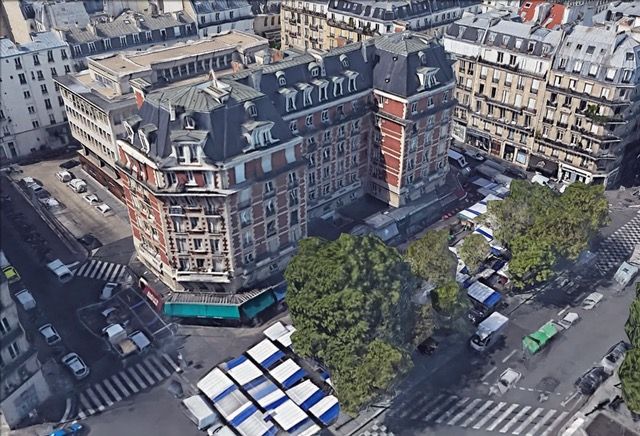
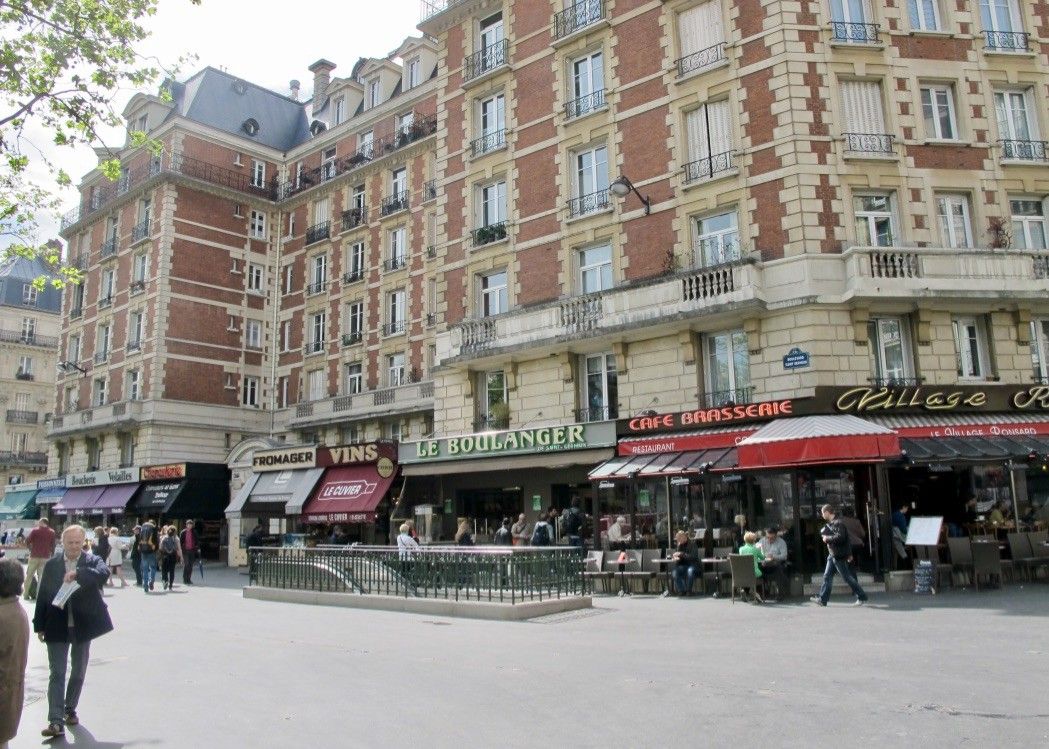
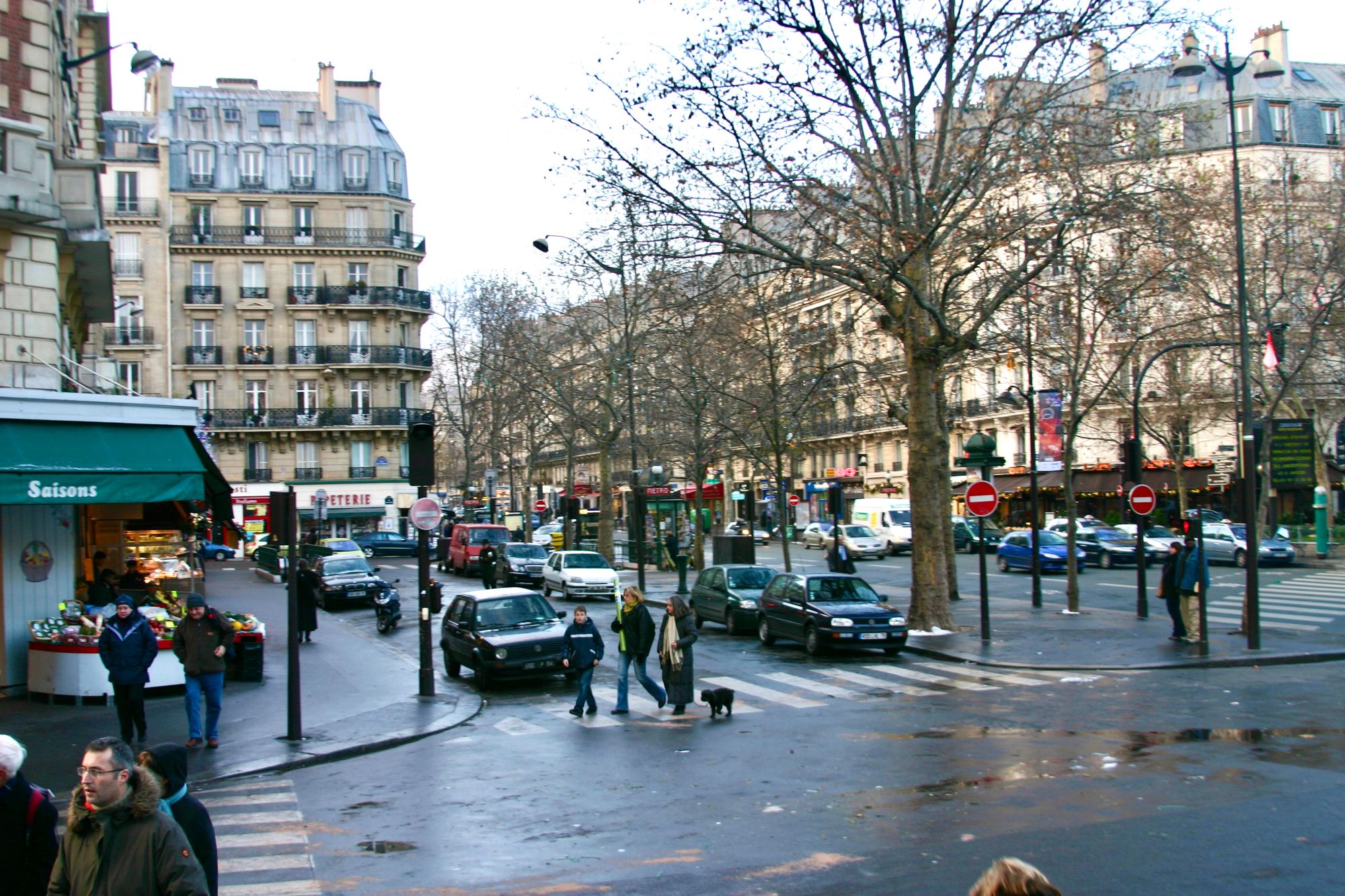
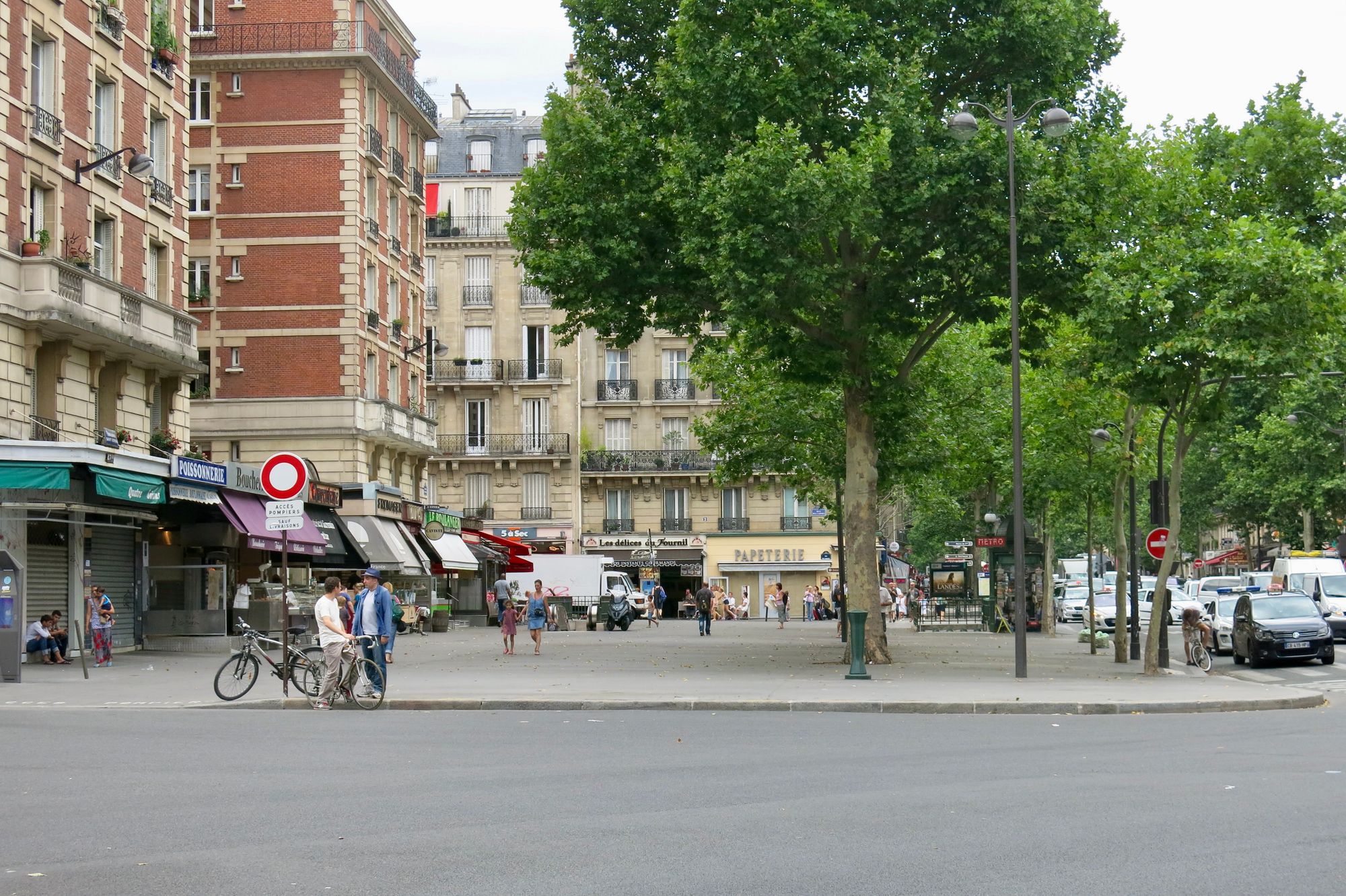
Overrun by vehicles in the past (left) compared to more pedestrian-friendly design in recent times (right).
Twenty-five years ago Place Maubert was overrun by parked cars. Since then, a street, including its parking lanes, has been removed from the plaza and some of the surrounding streets have been narrowed, making more room for a market and pedestrian activity. In addition to the 11 stores at the base of the building, there are many other cafés, restaurants, shops, news kiosks, and a metro station.
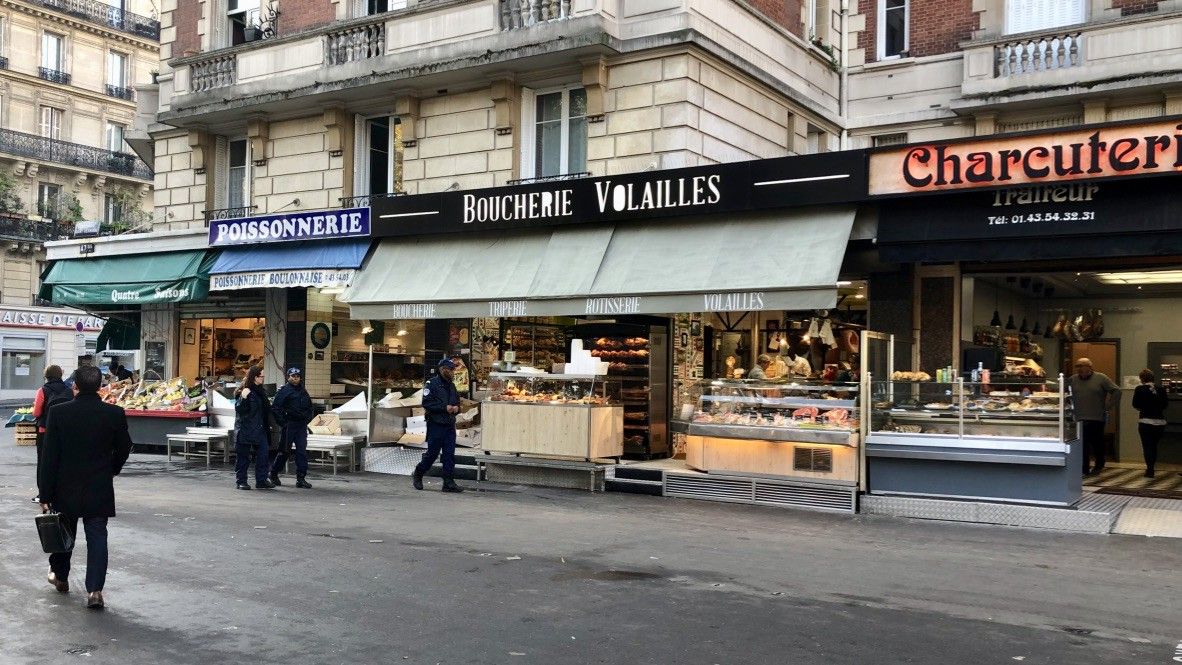
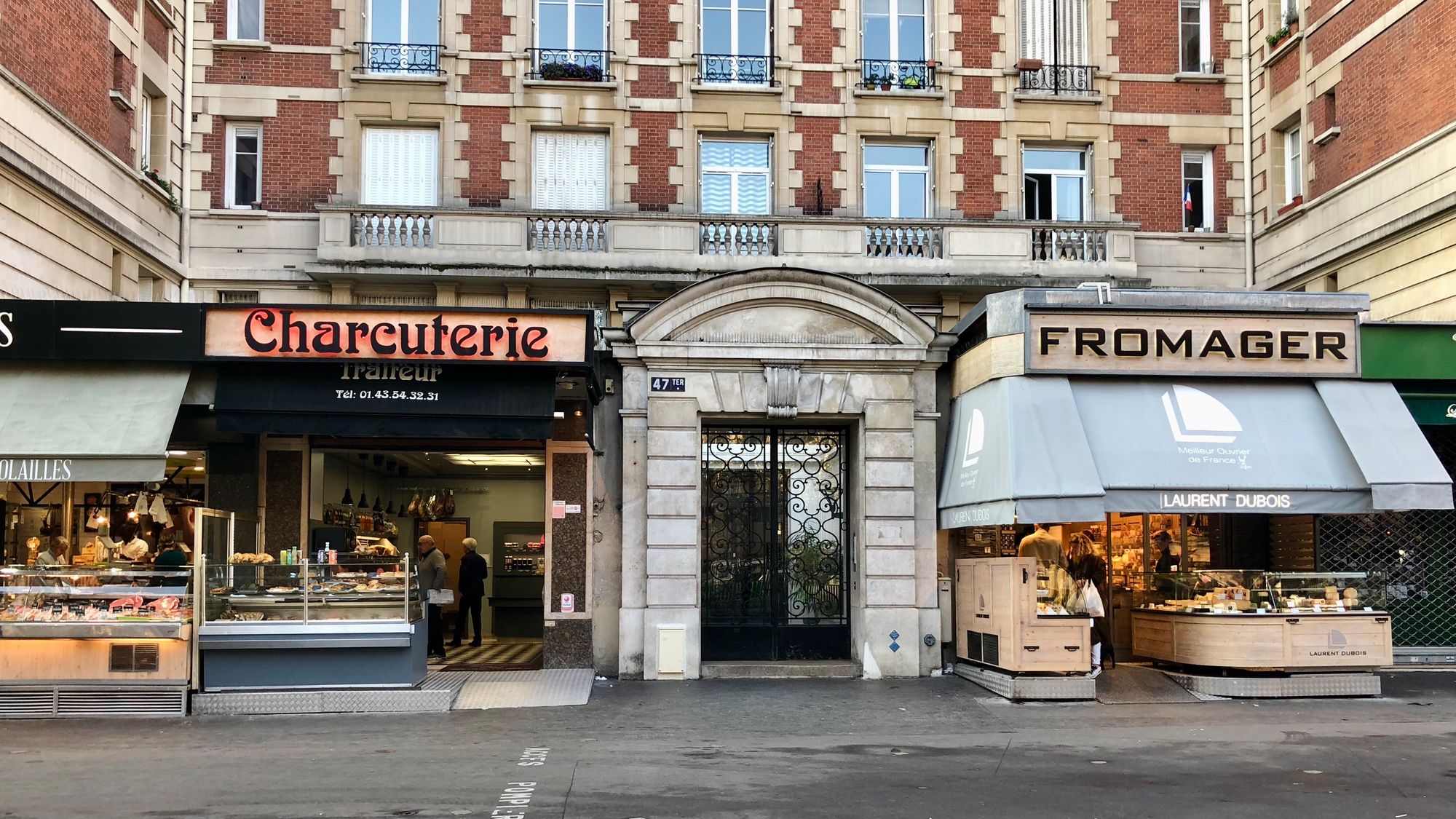
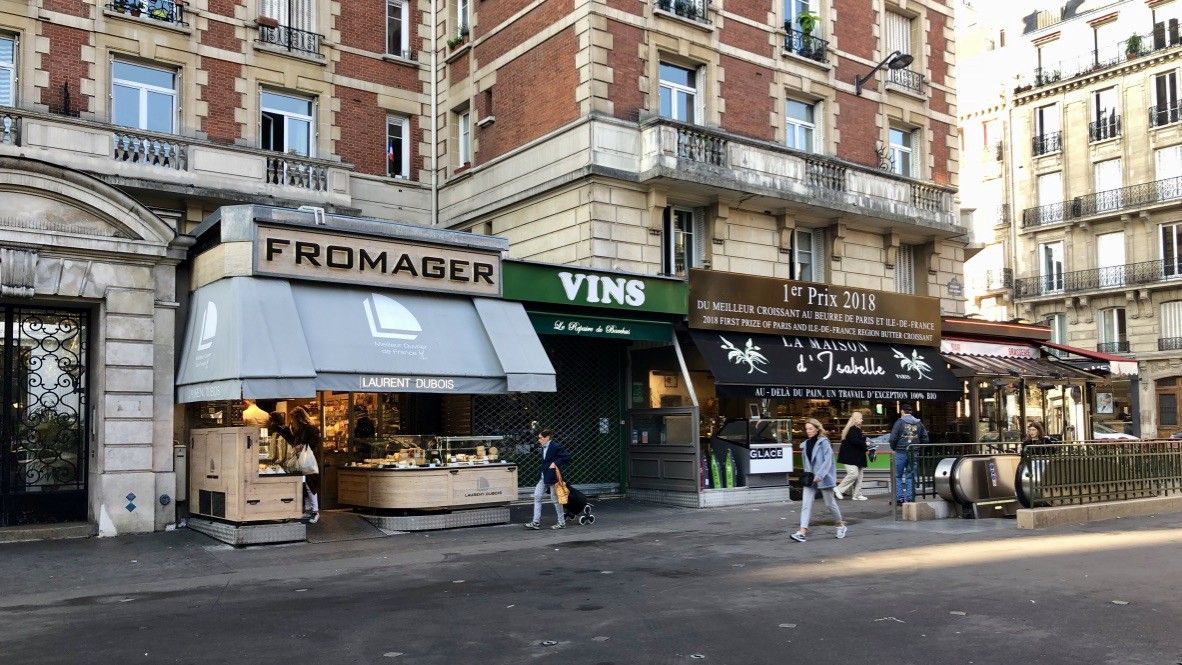
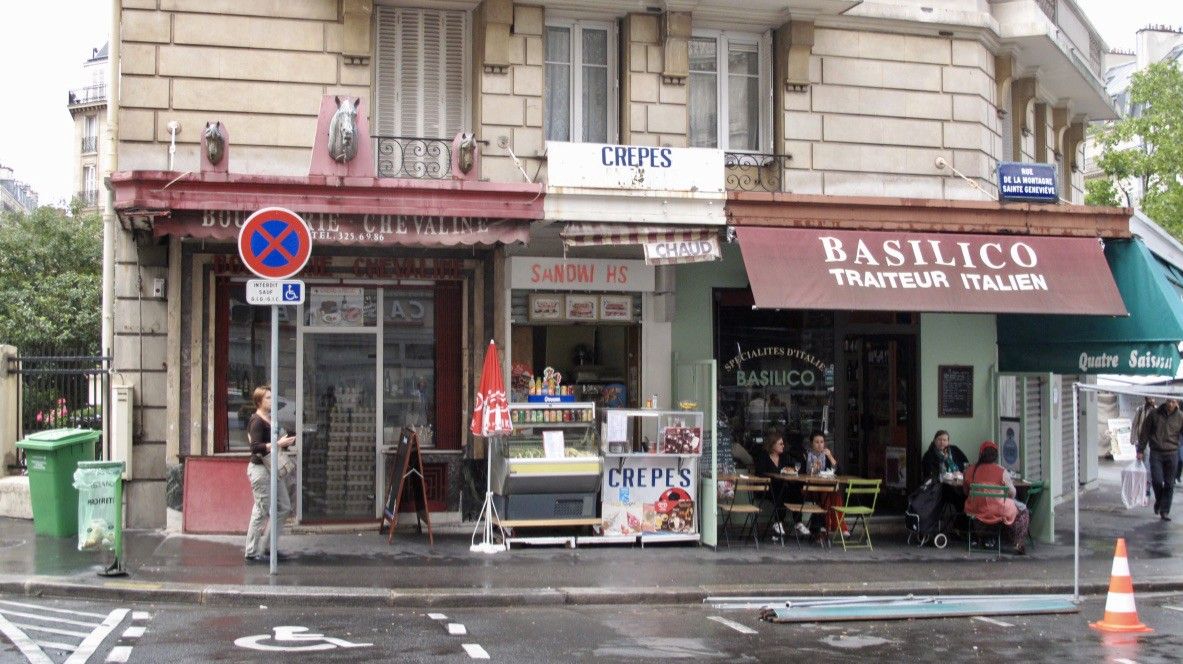
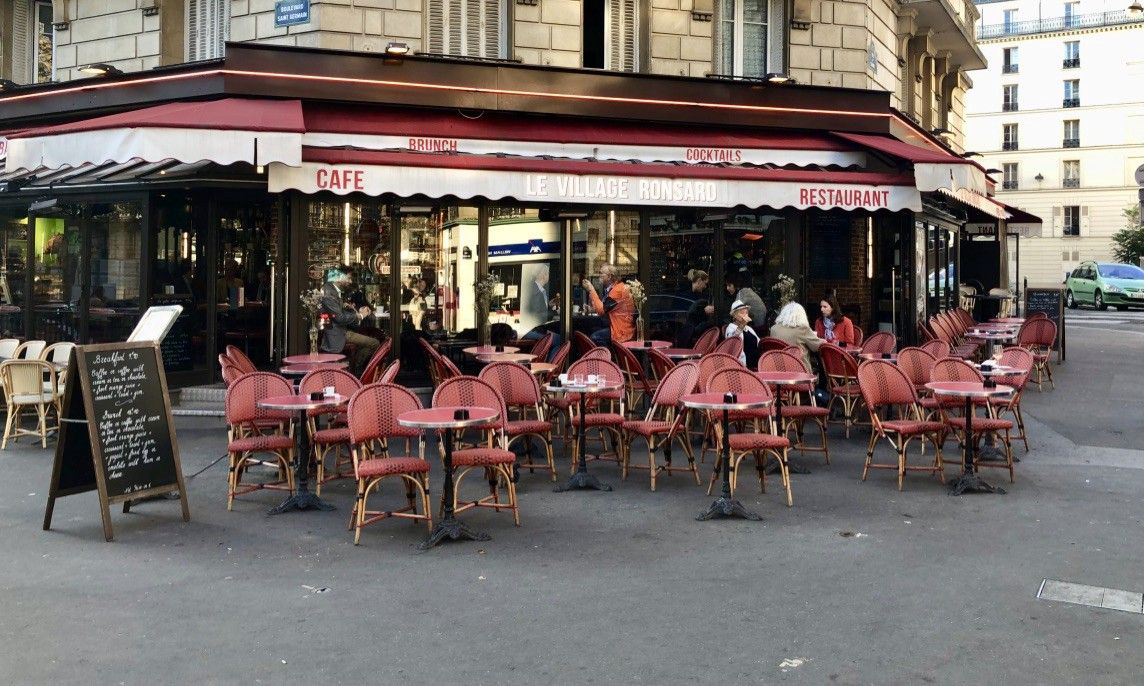
The Georgian Building (shown here from various angles) is a community hub with 11 local food purveyors and several small restaurants
The building at eye level
From a distance, the Georgian Building on Place Maubert commands a strong presence. But its qualities really shine at the “eye level” — where shops extend out onto the former street space and local businesses encourage interactions between merchants and customers.
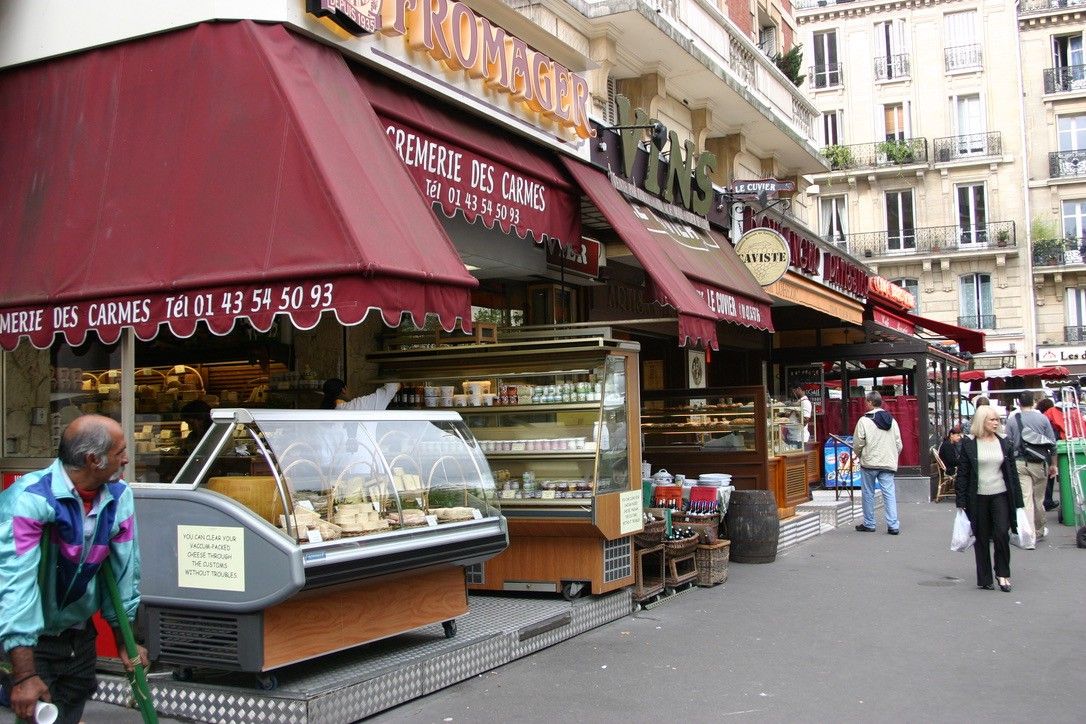
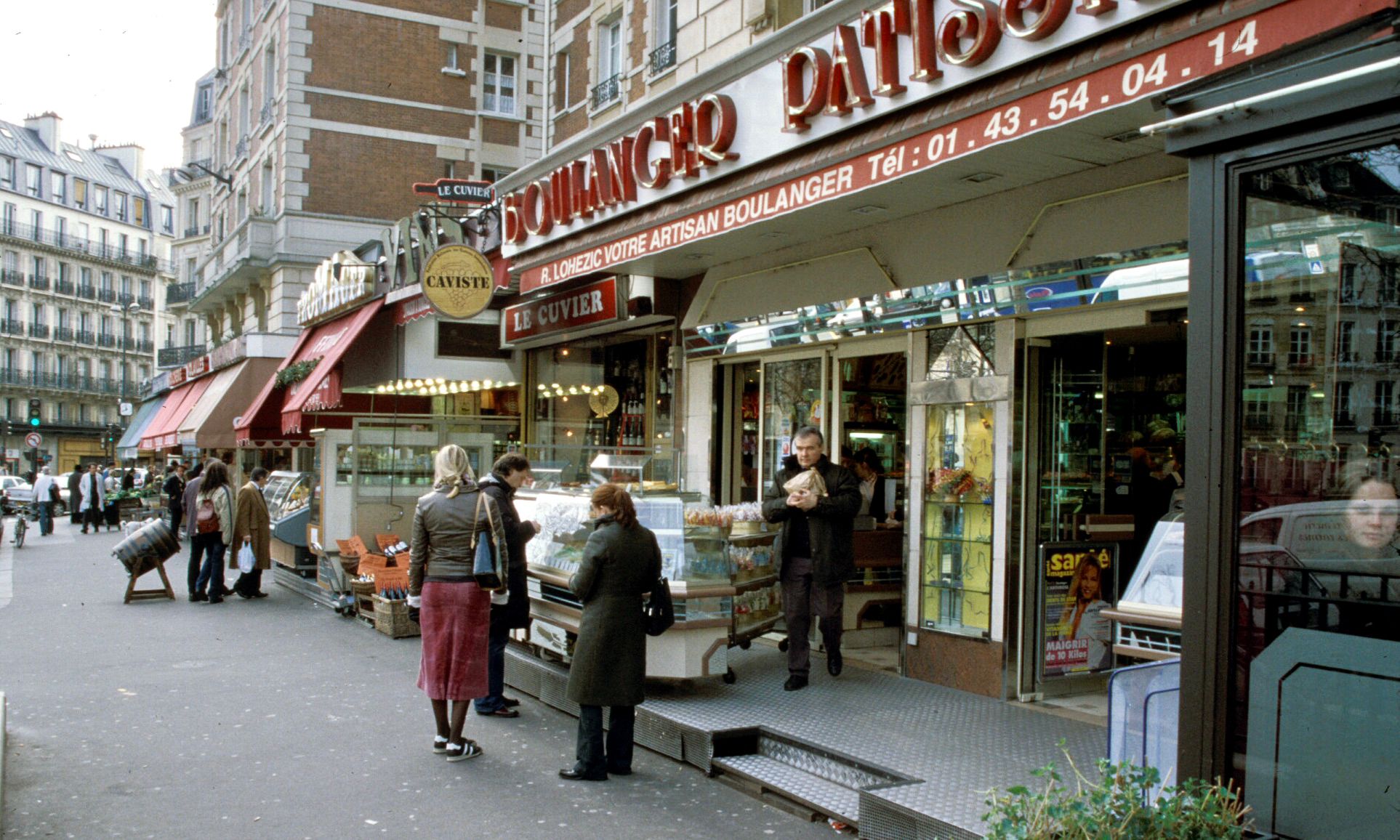
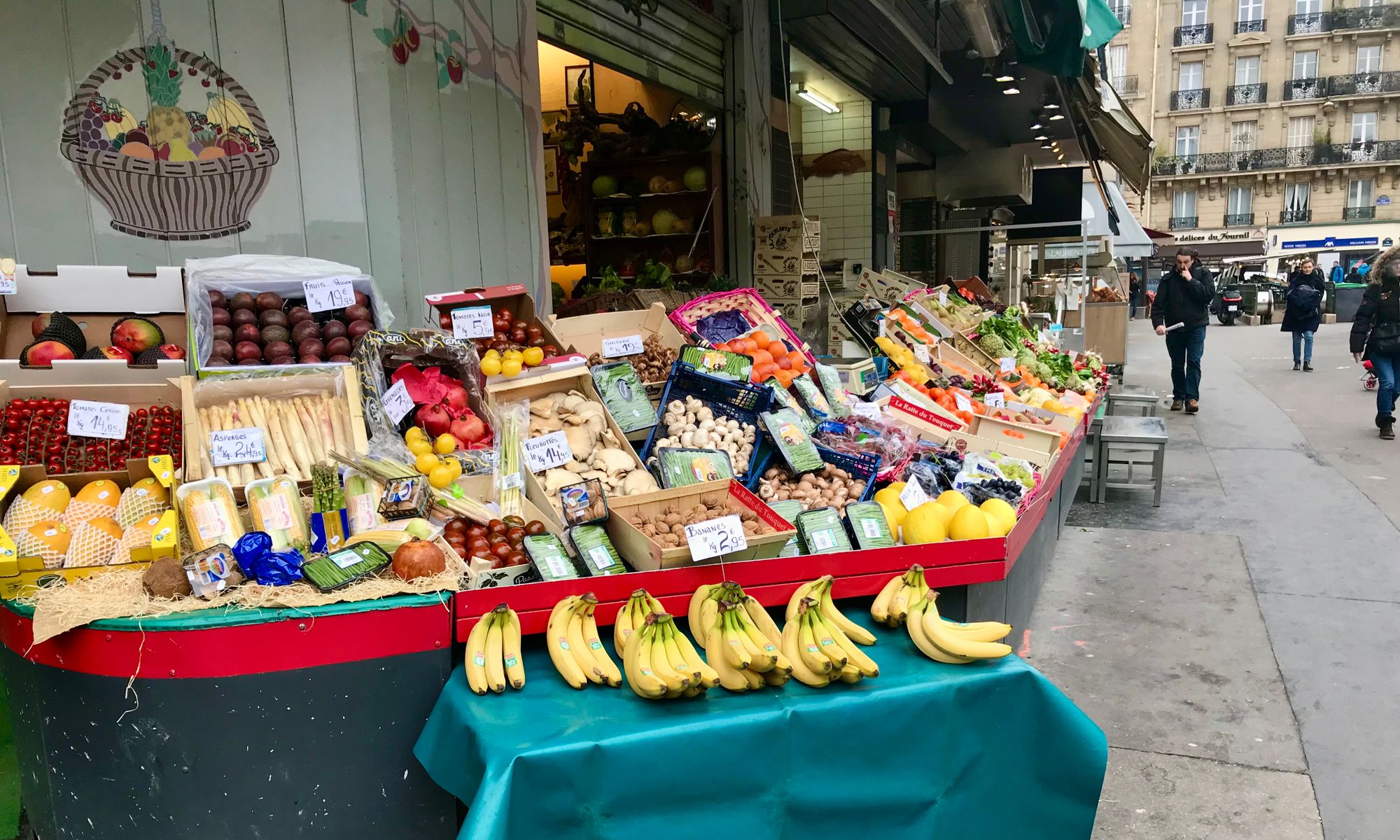
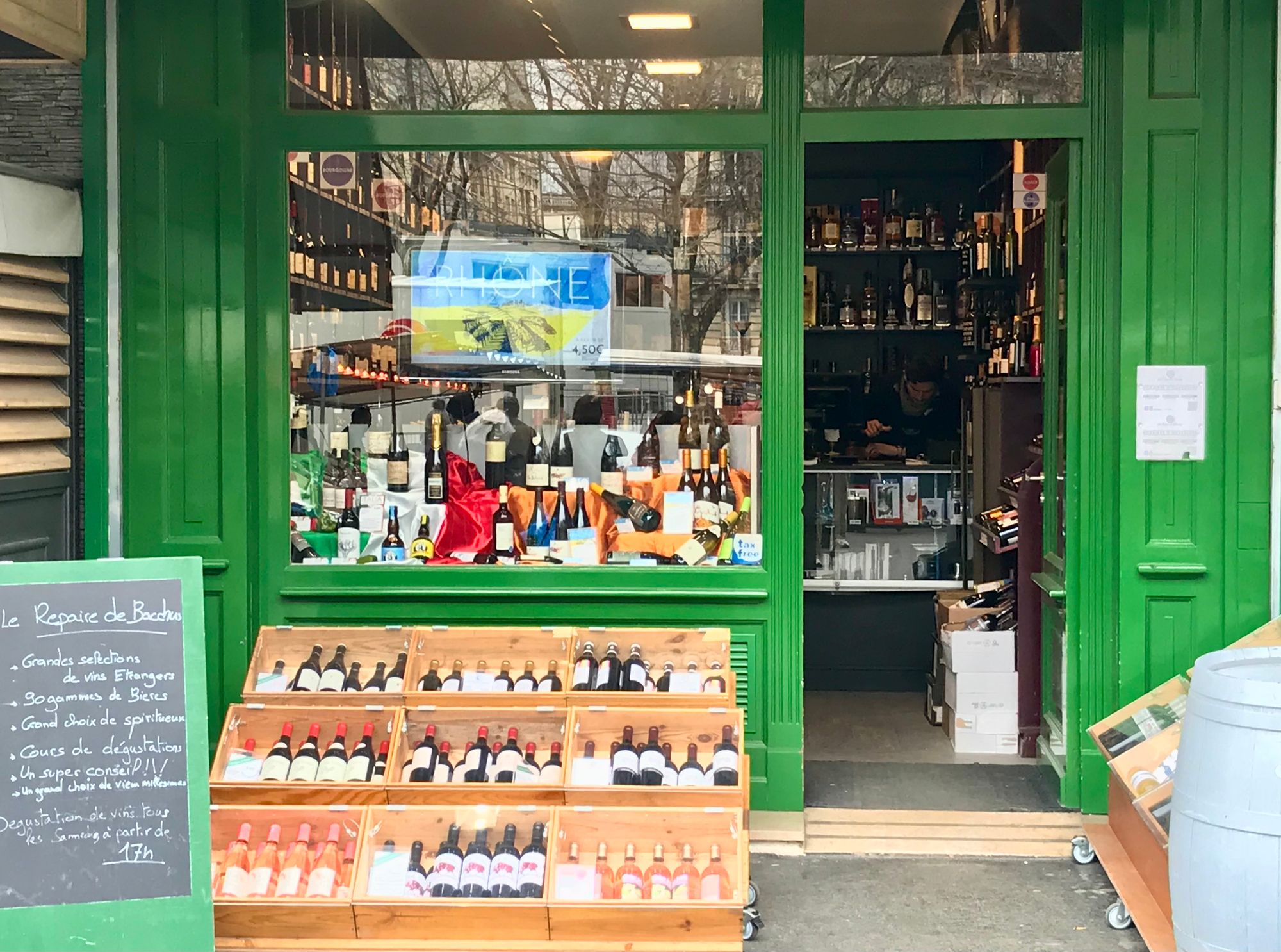
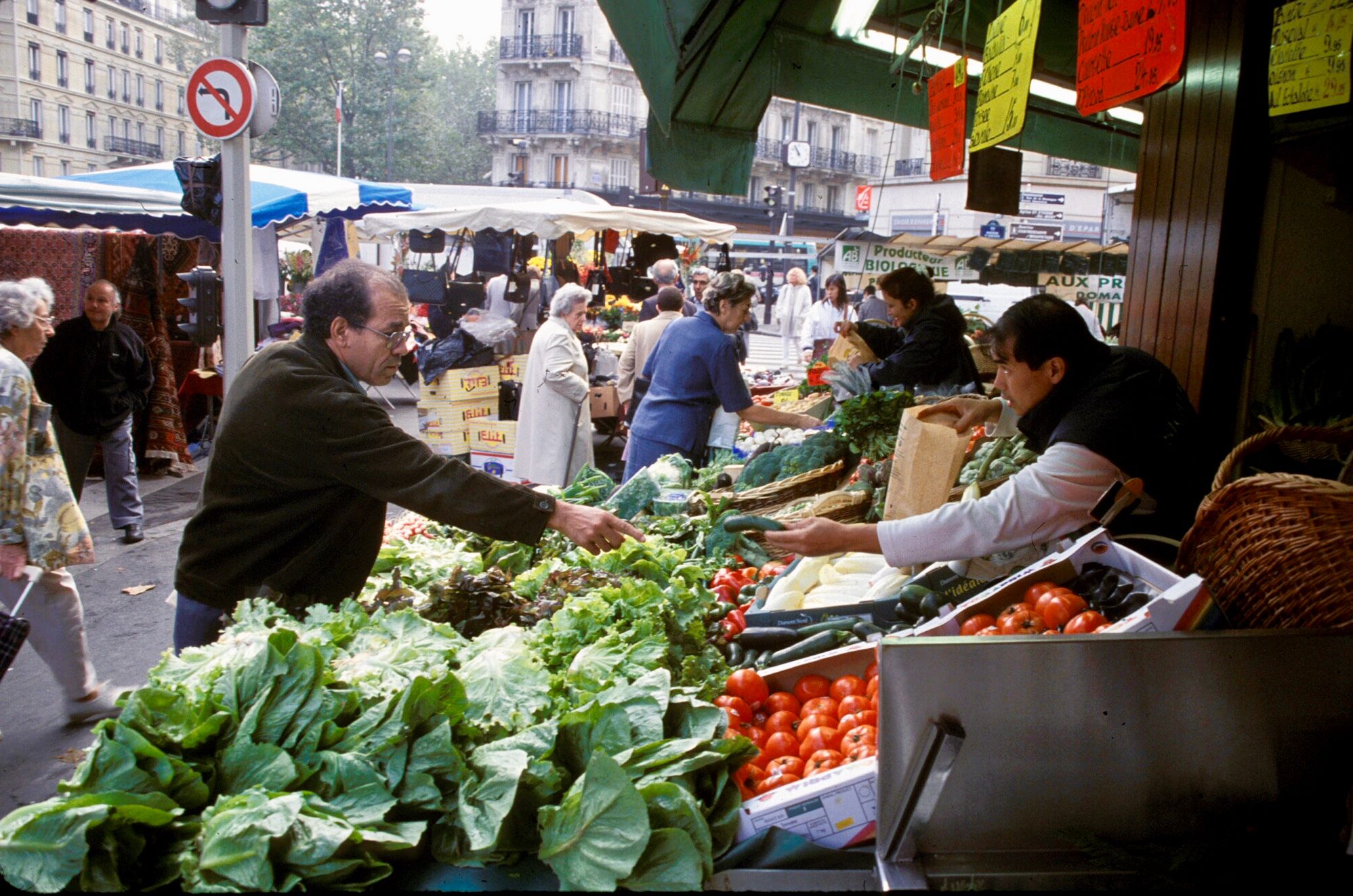
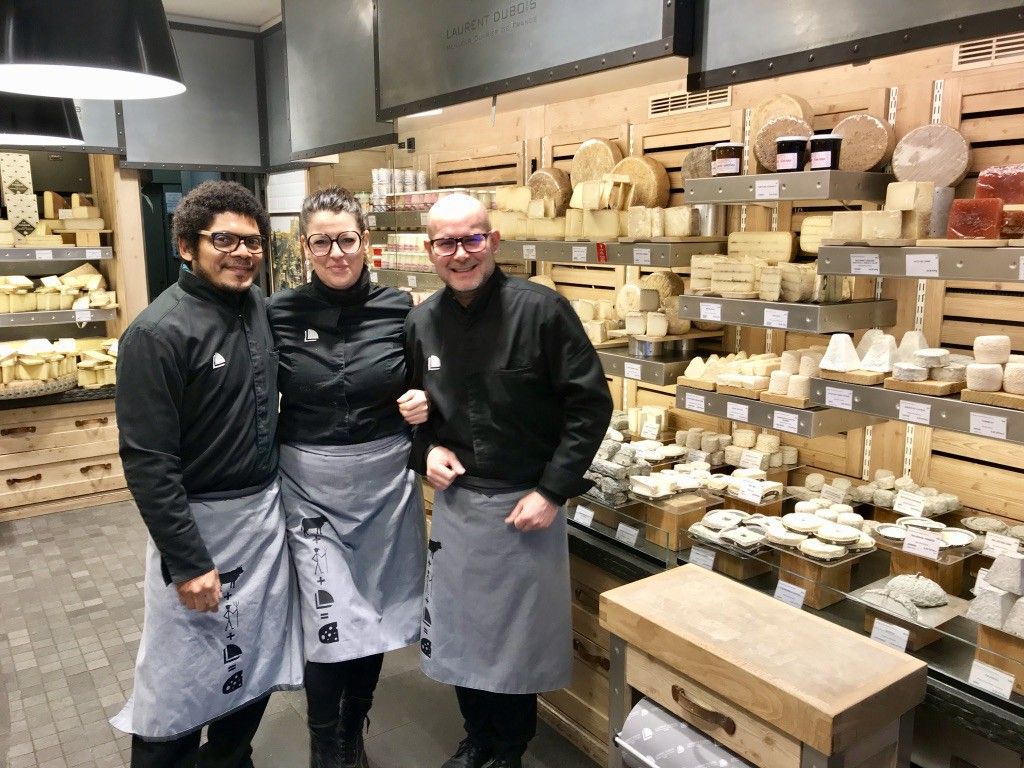
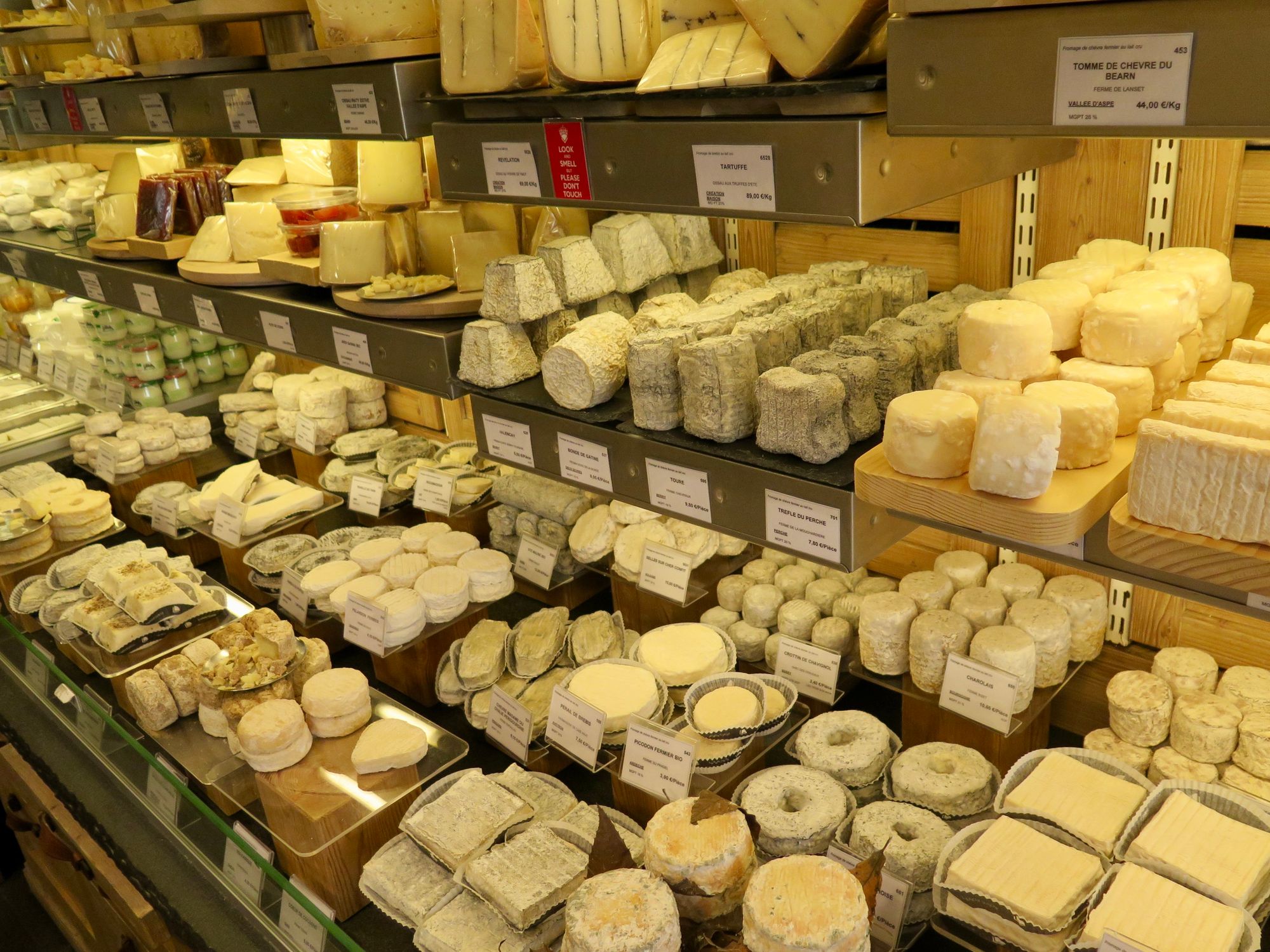
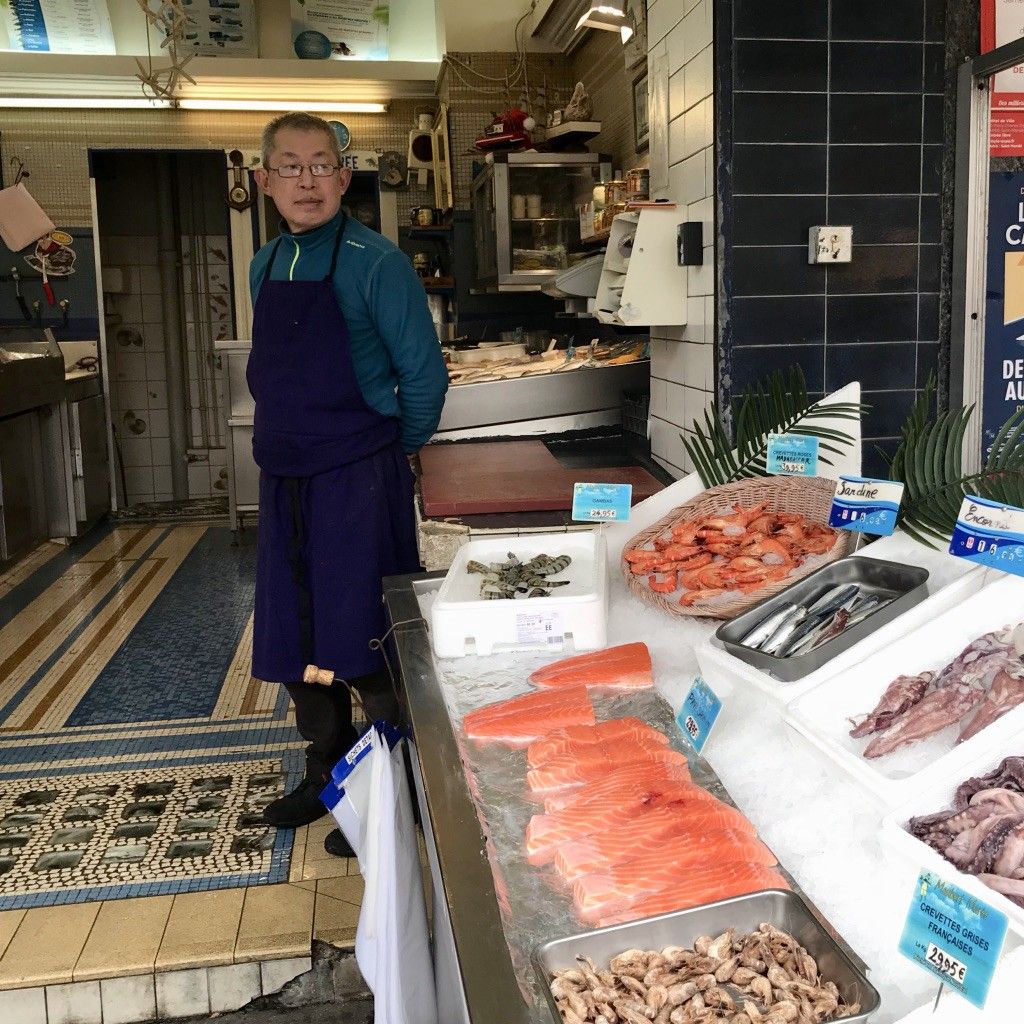
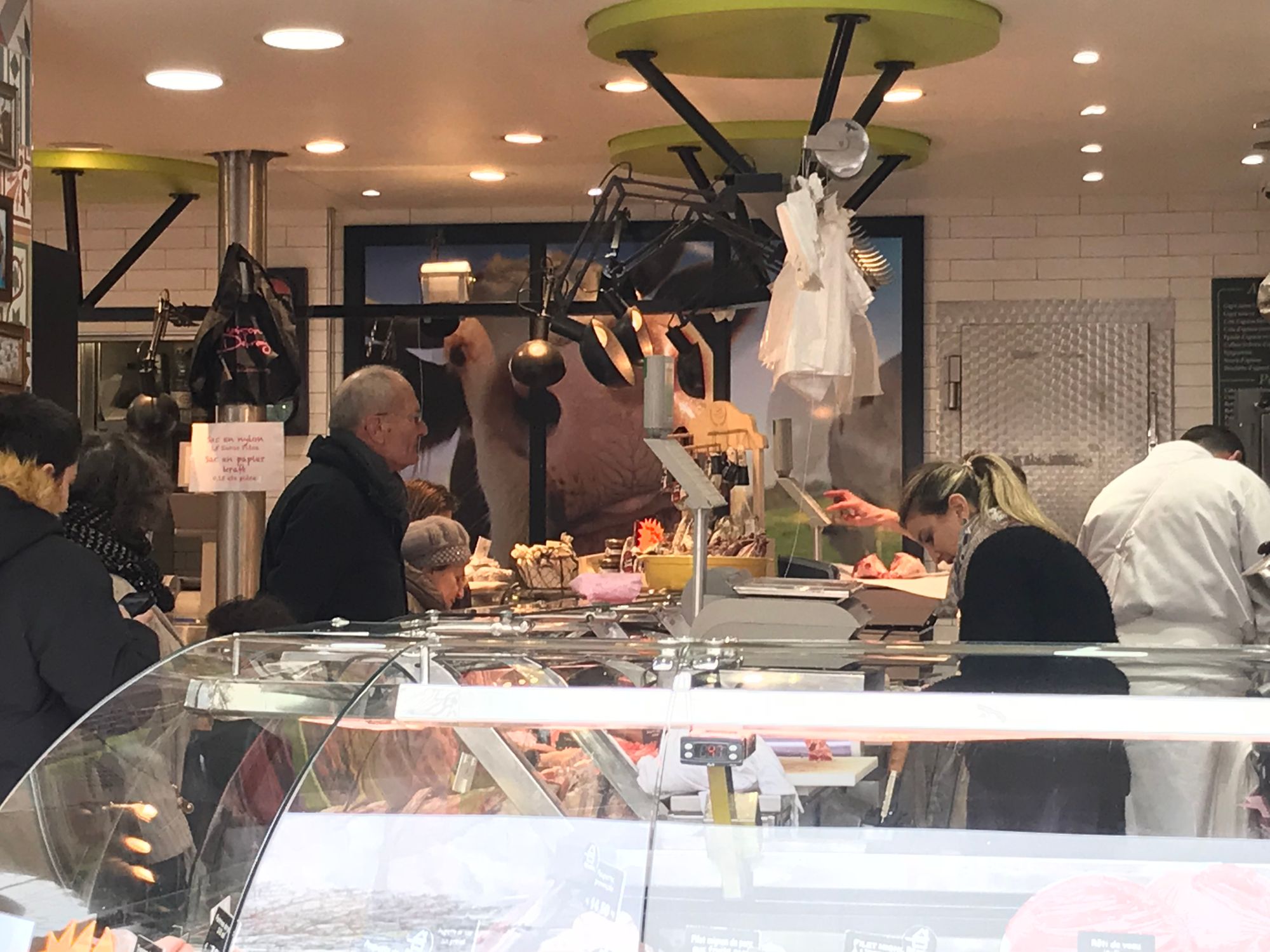
Local shopkeepers can help you choose the best ingredients for dinner, which makes shopping a pleasant social experience rather than a chore
Market days in the plaza
Three days a week, the Marché Maubert fills the plaza with some 45 food vendors. During the market, the sidewalk becomes double-loaded, and as a result, transforms into an especially wonderful place to browse storefronts and market stalls. There is even a seamless transition between surrounding food stores and the marketplace. It all becomes one big dynamic destination.
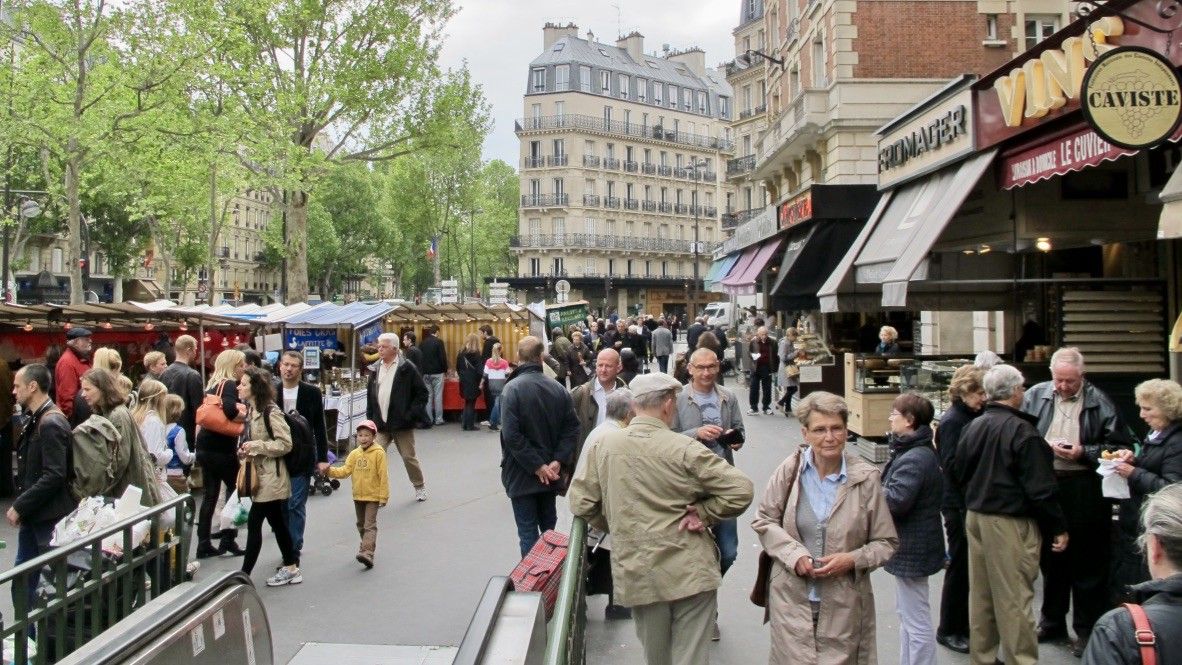
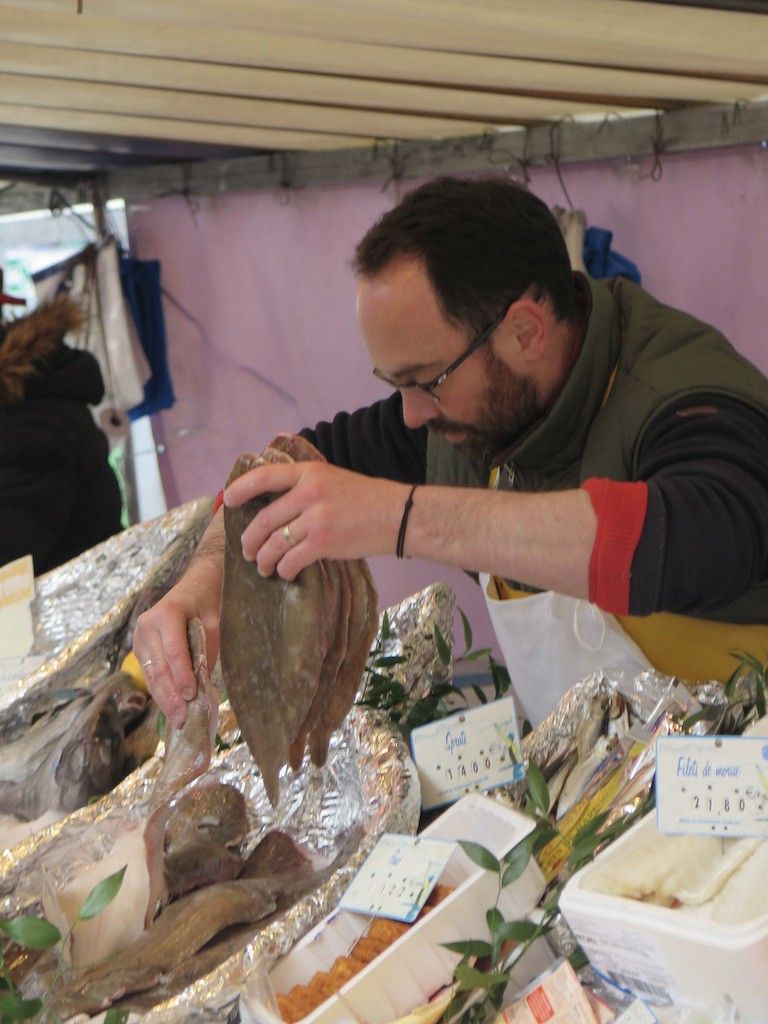
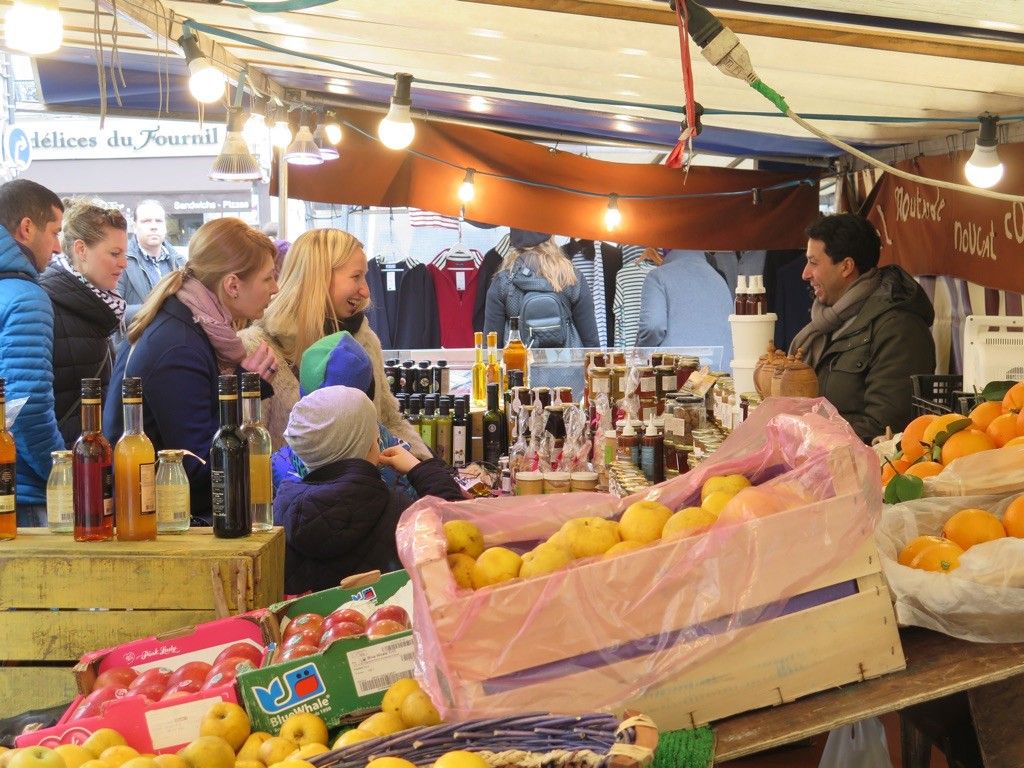
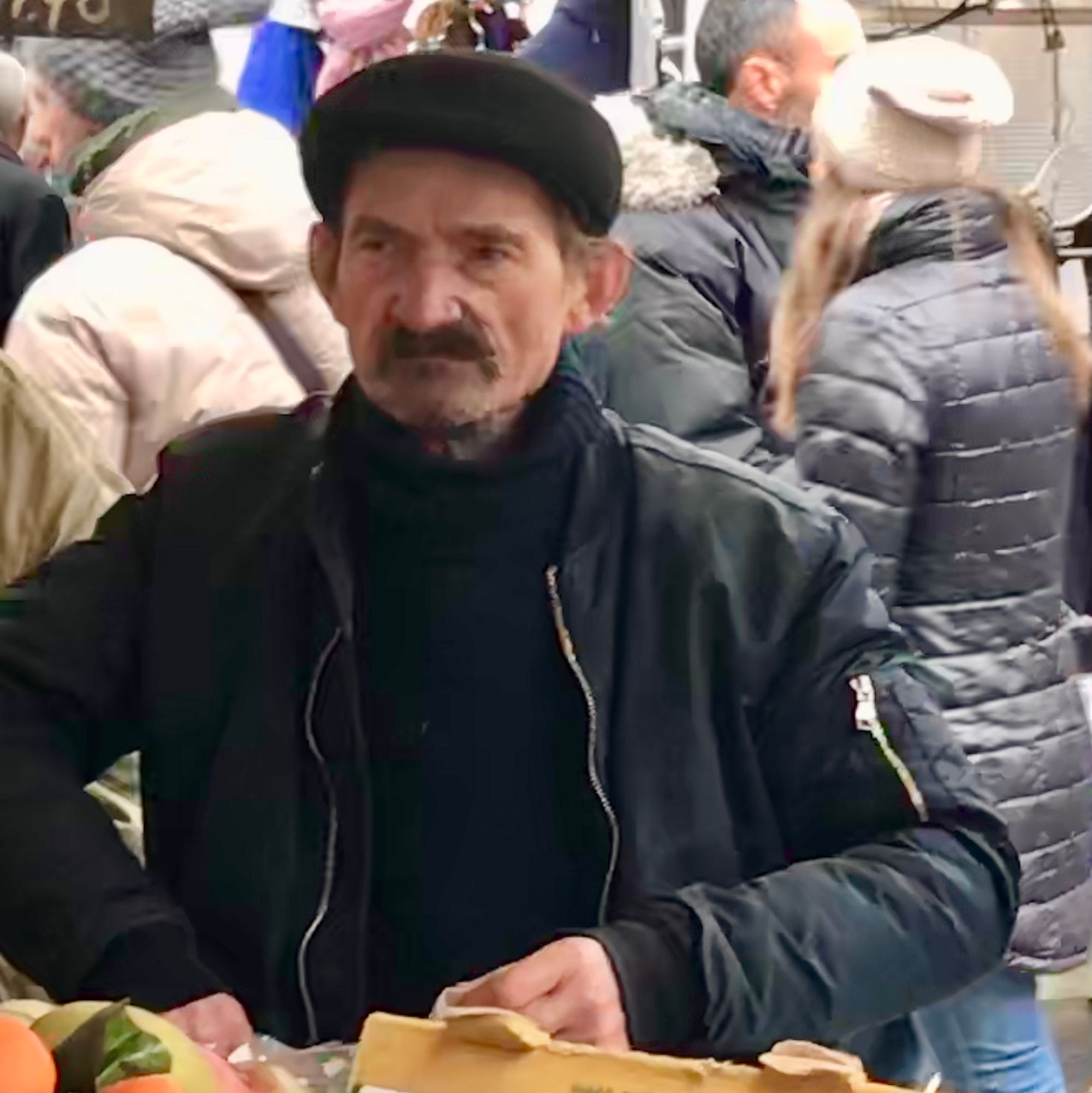
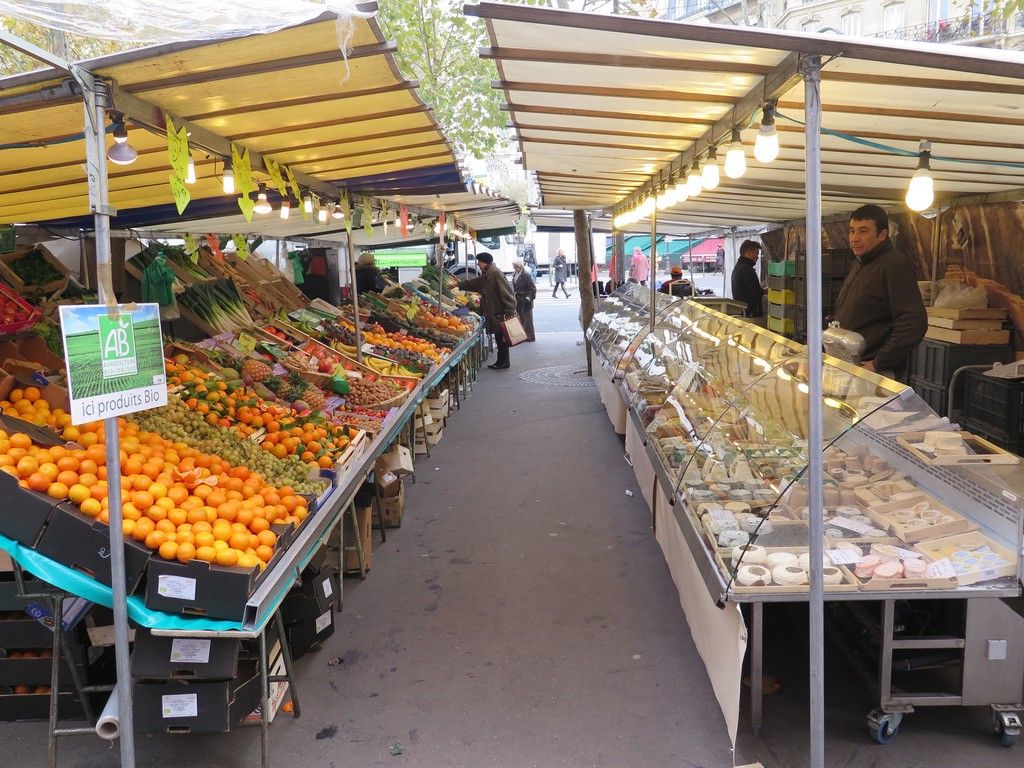
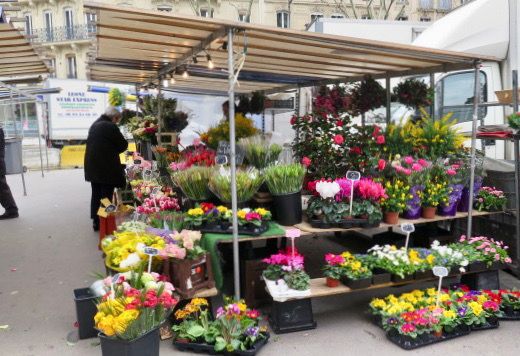
Sunday Antique Market
On Sundays, an antique market is held. It's a regional attraction, where one can unearth marvelous treasures. Vendors are knowledgeable about their products and enjoy talking about the origins of each item for sale.
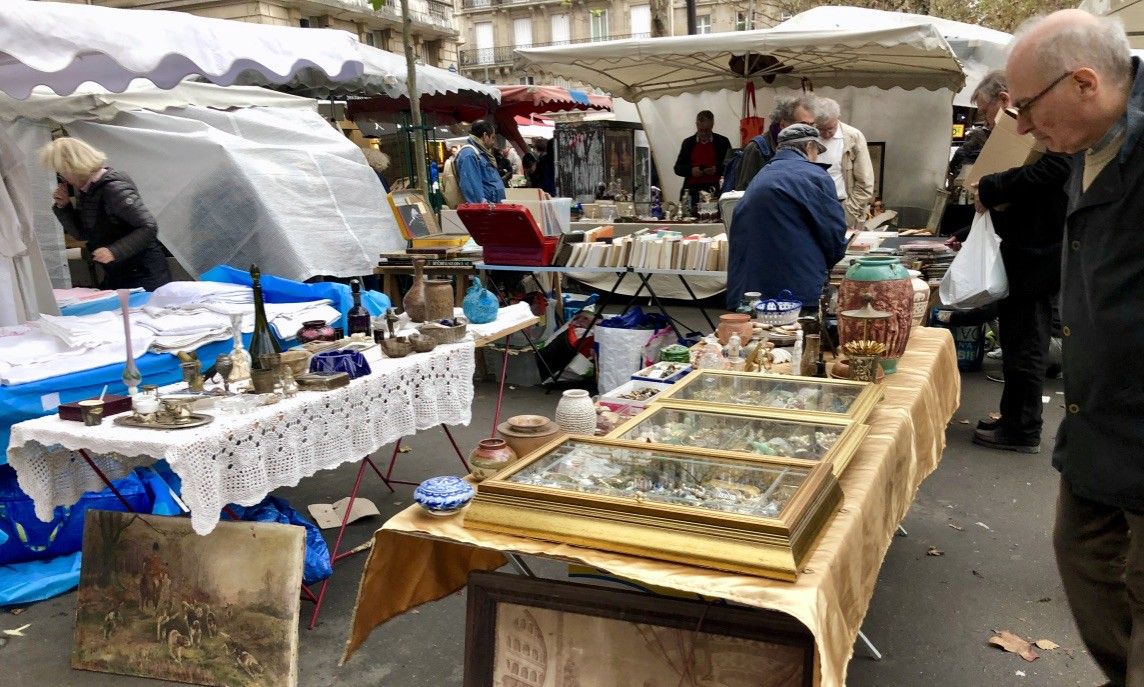
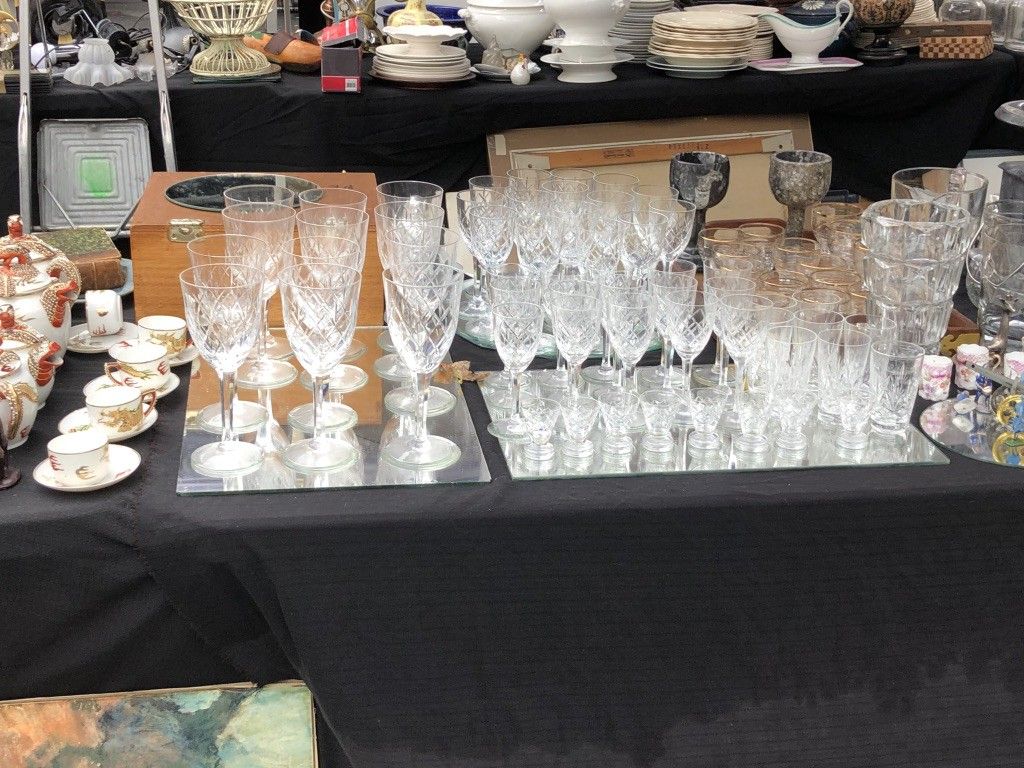
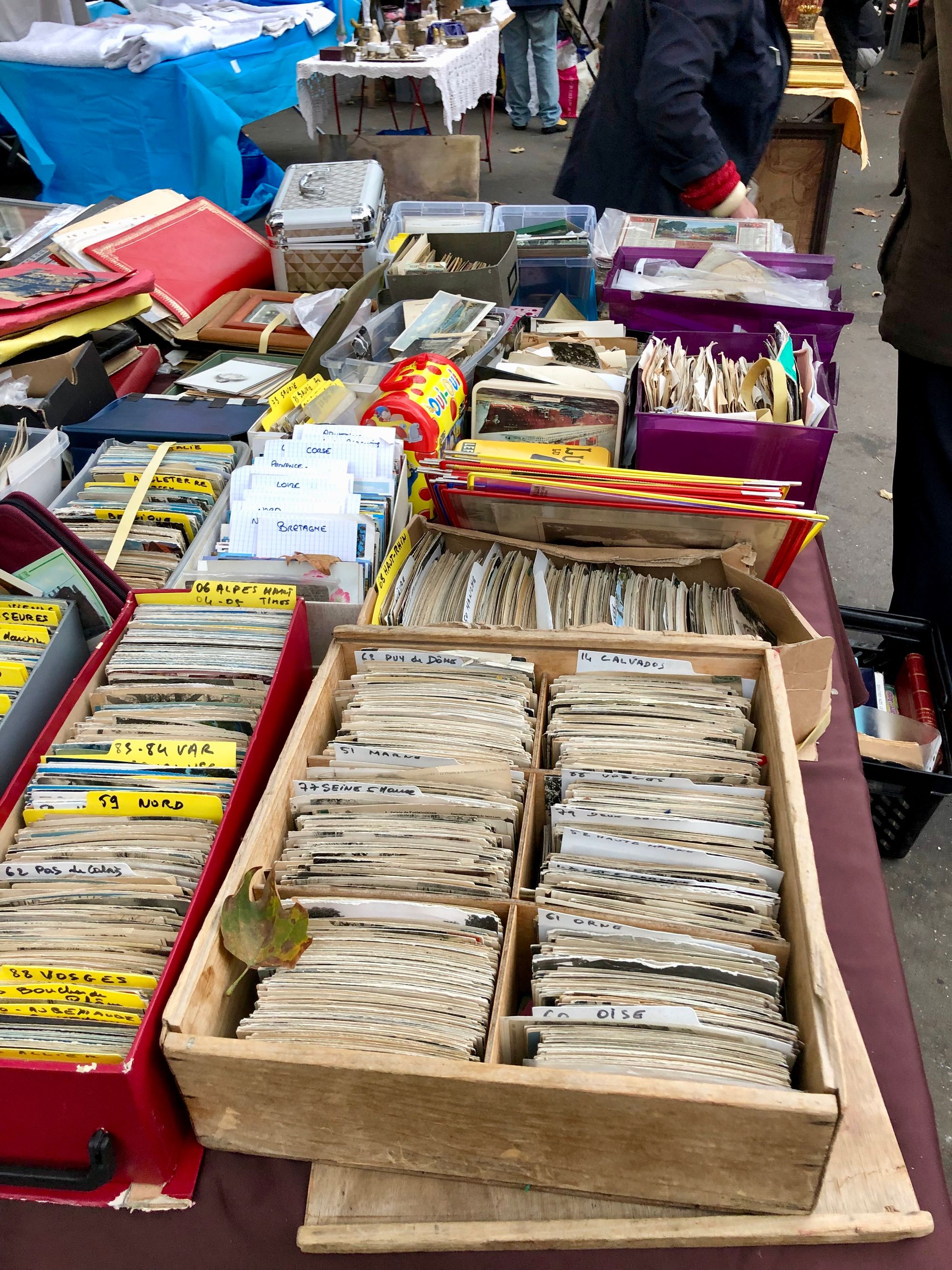
Friendly negotiation is a key part of the flea market experience, allowing you to get a better understanding of purchases but also of the seller
Takeaways
Evidence that double-loaded sidewalks are safe and comfortable for everyone is that small children can roam freely there while still being supervised by an adult enjoying a nearby bench or café. These "front porches" for small businesses create mini-plazas that can be game-changers when applied along entire blocks.
Architecture can play a much bigger role in contributing to social life in our communities. Attention to fine-tuned design details, and having the right uses and activities, makes all the difference.
We have a favorite quote from Holly Whyte, who wrote that "benches are artifacts, the purpose of which is to punctuate architectural photographs. They are not so good for sitting." When buildings are just designed as objects, little attention is paid to how the building hits the ground or what purpose adjacent spaces and amenities serve. The character of a building, and the dynamic underlying how it interacts with its surroundings, radiates outward. In short, a dull building creates a dull public space.
The base of the building is a different design challenge than what's upstairs. At the street level, a building with small shops that spill into the public space is a start. Add to that a plaza with a market or double-loaded sidewalk, and the buildings can come alive. What is outside becomes inside, and what is inside becomes outside. The sidewalk and building are integrated into one. It is the true meaning of the phrase "Architecture of Place" and we need more of it to revitalize our cities.
Related Articles
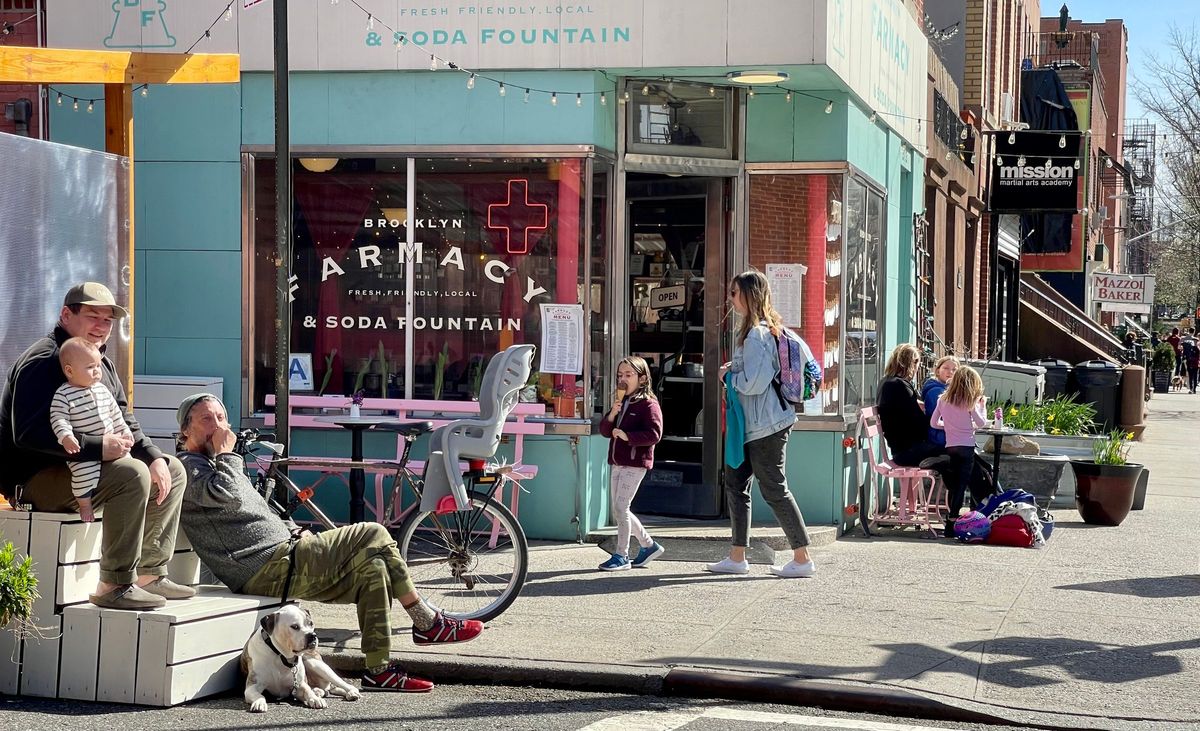
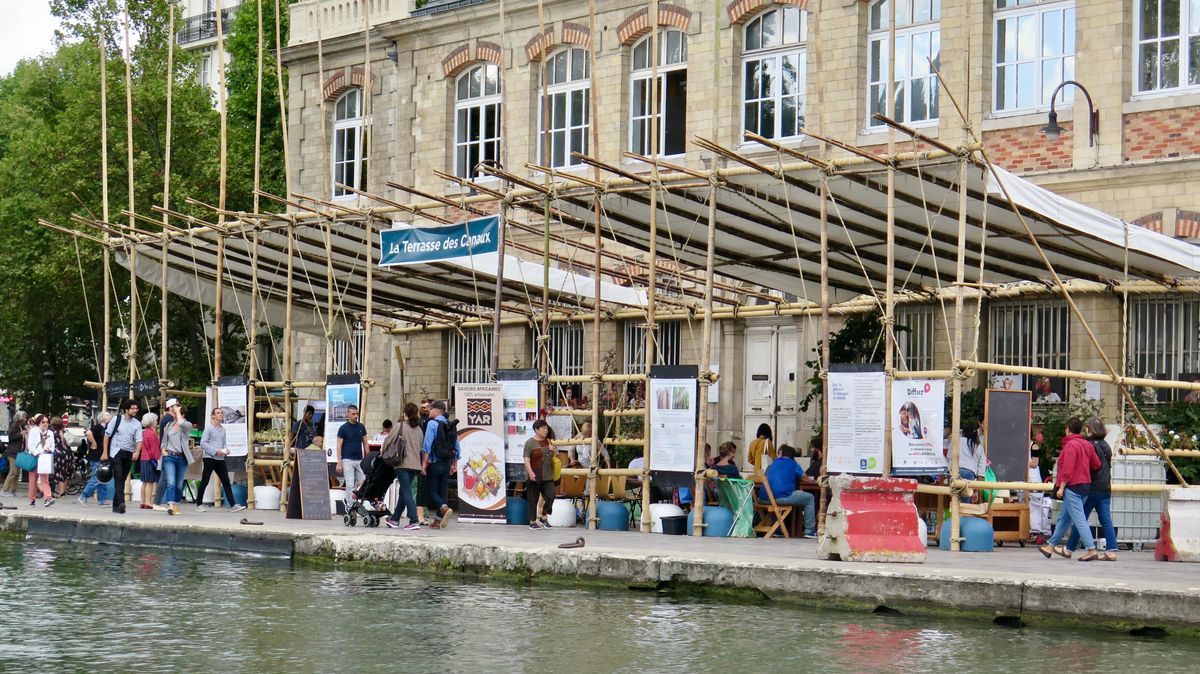
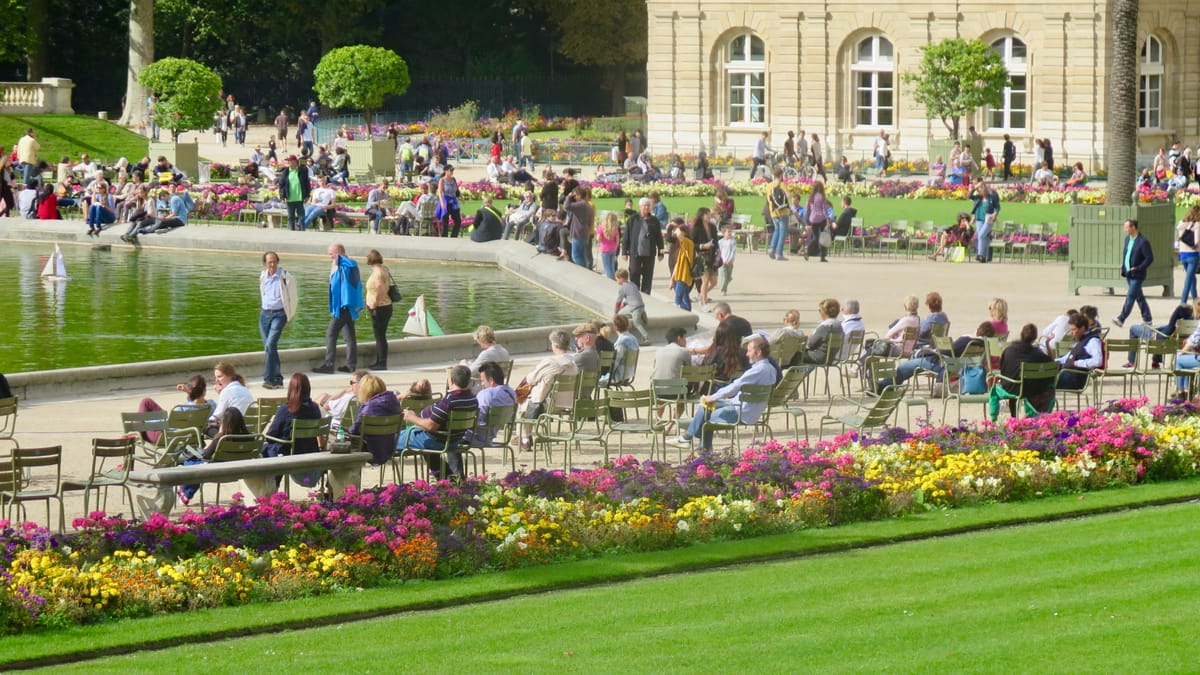
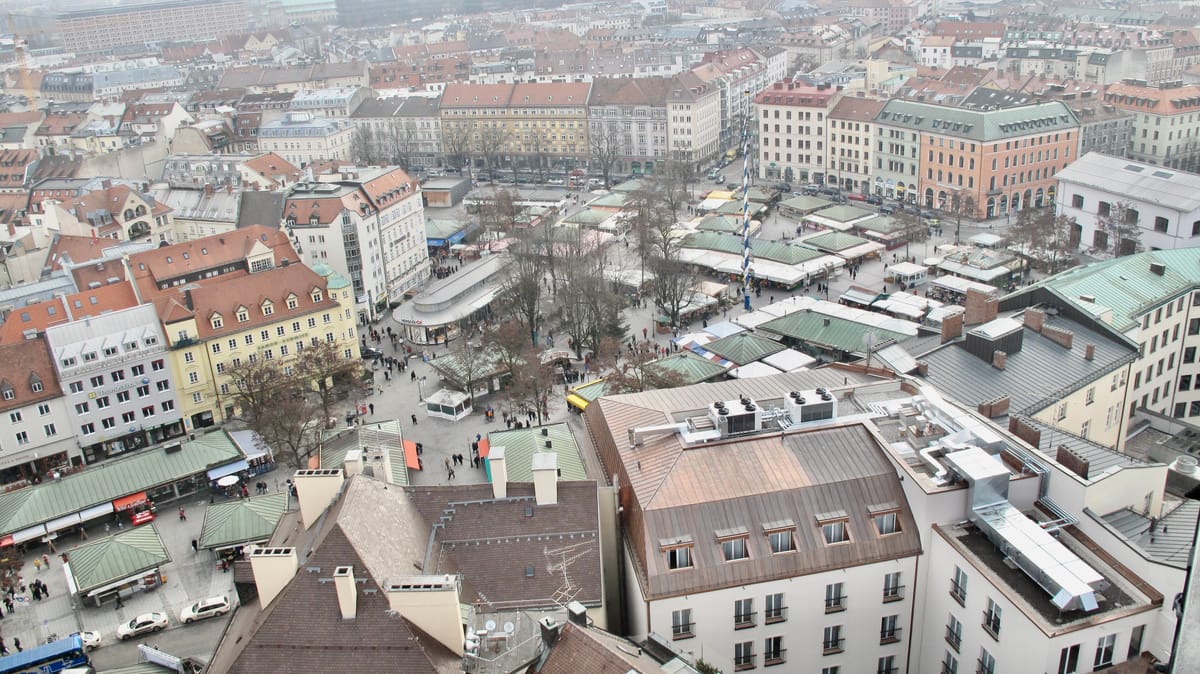
Further Reading
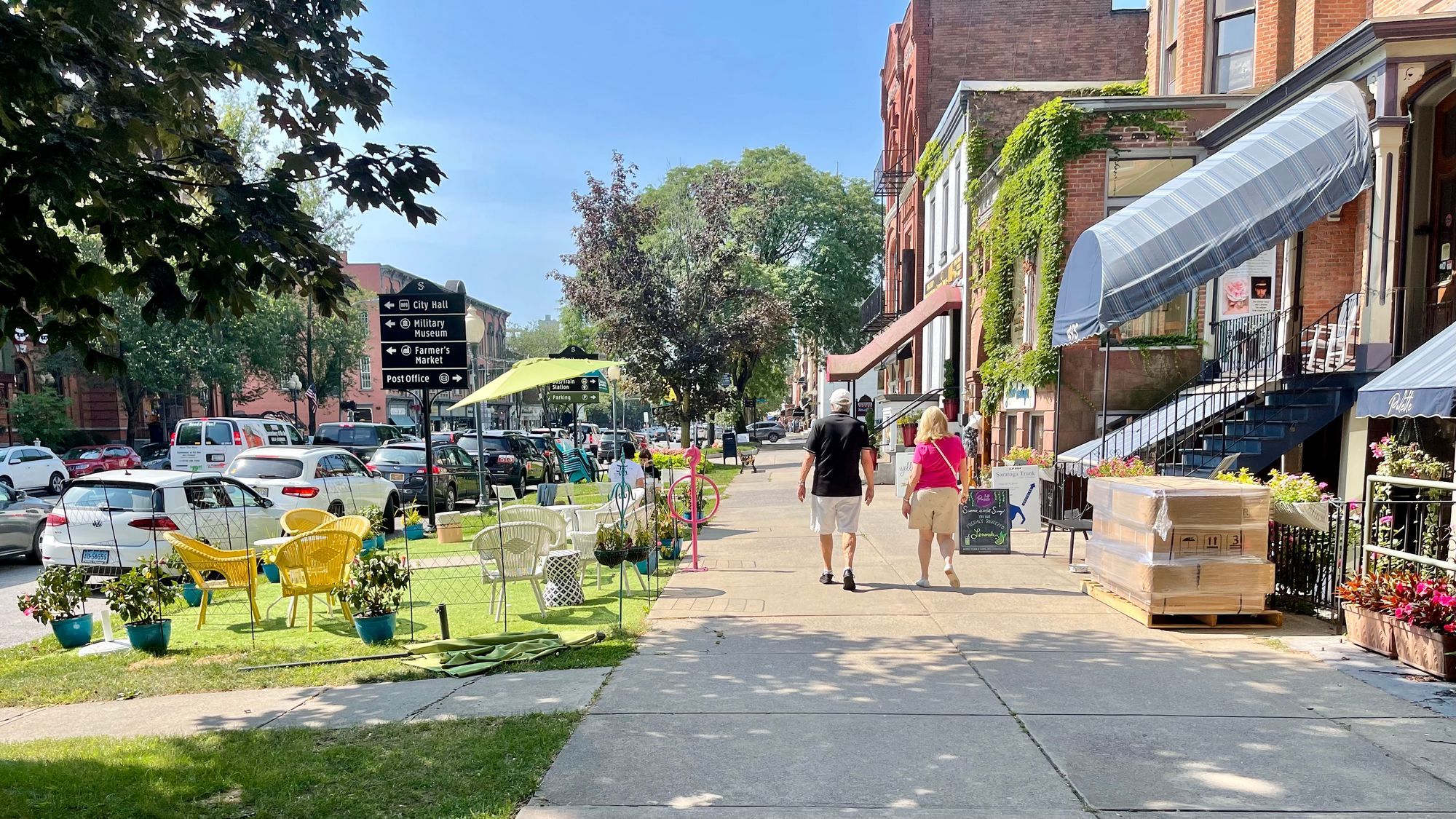
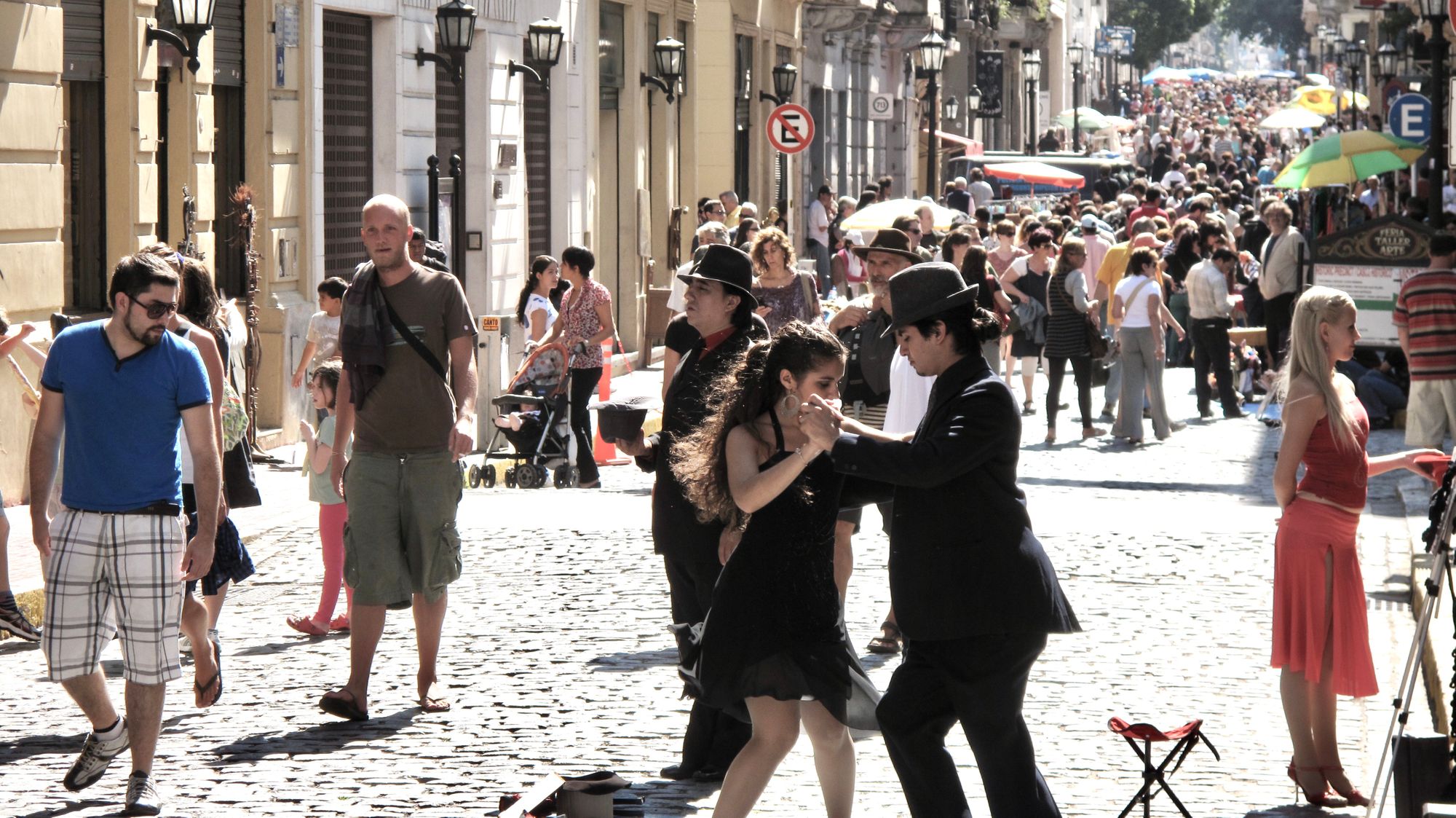
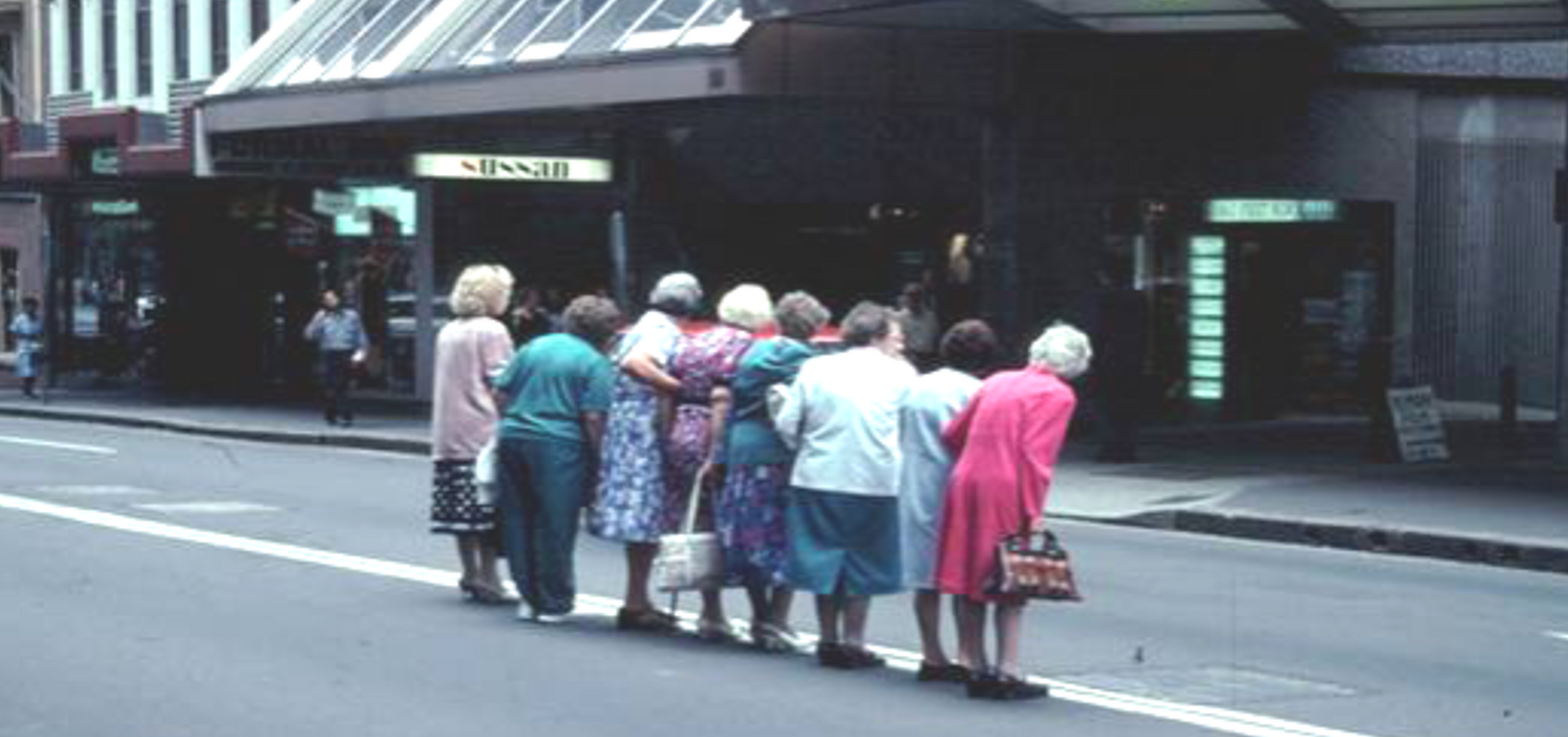
The Foundation and Future of the Placemaking Movement
